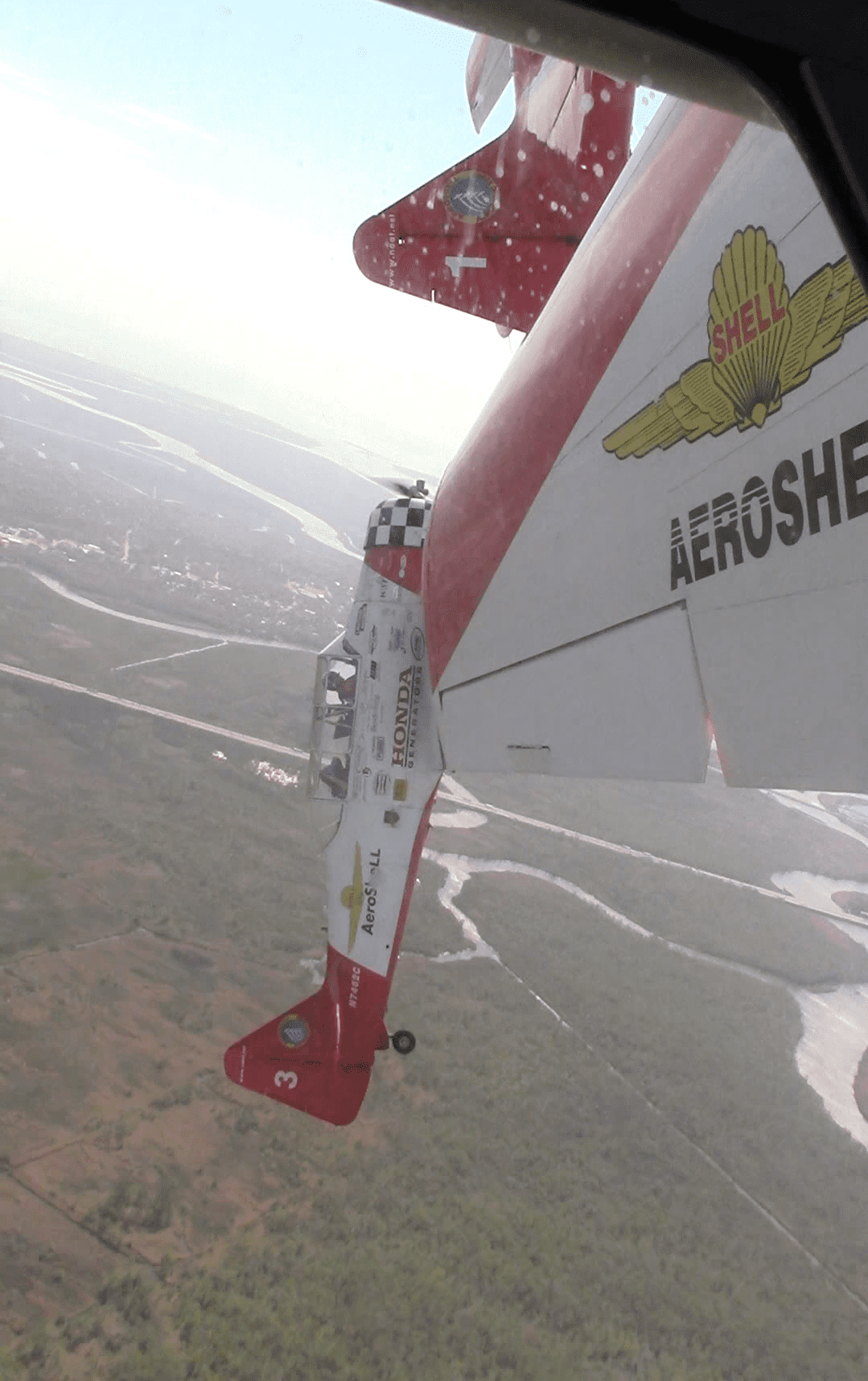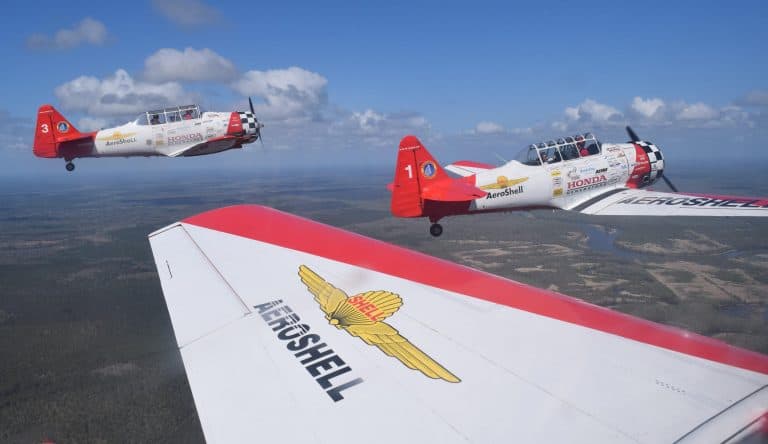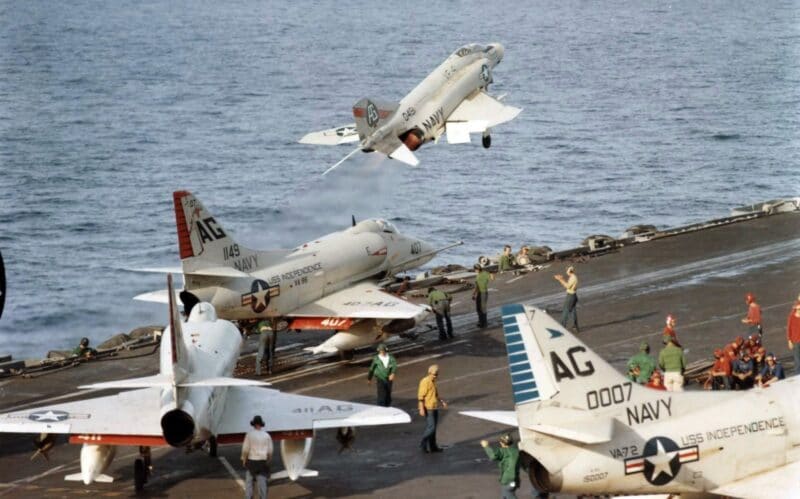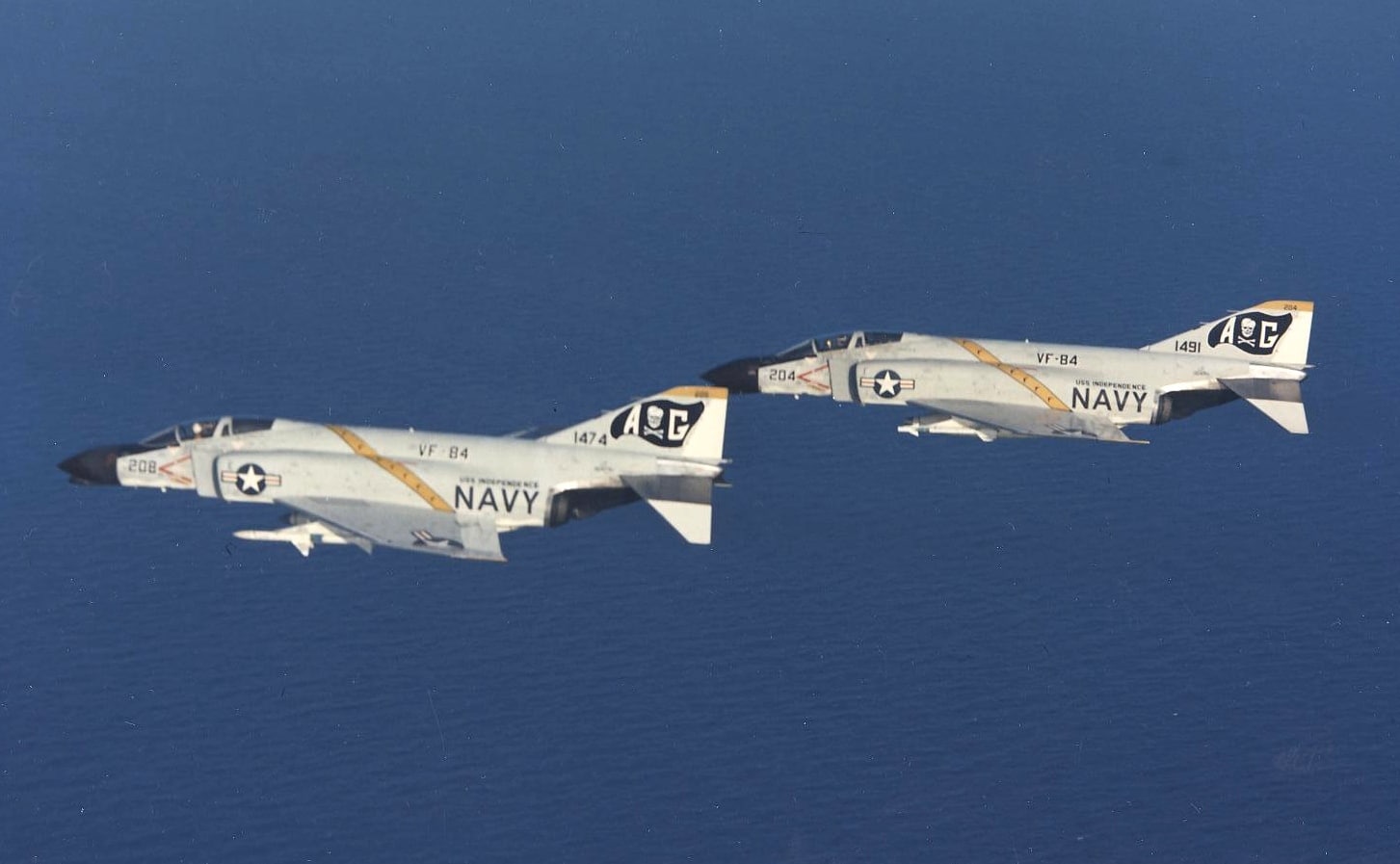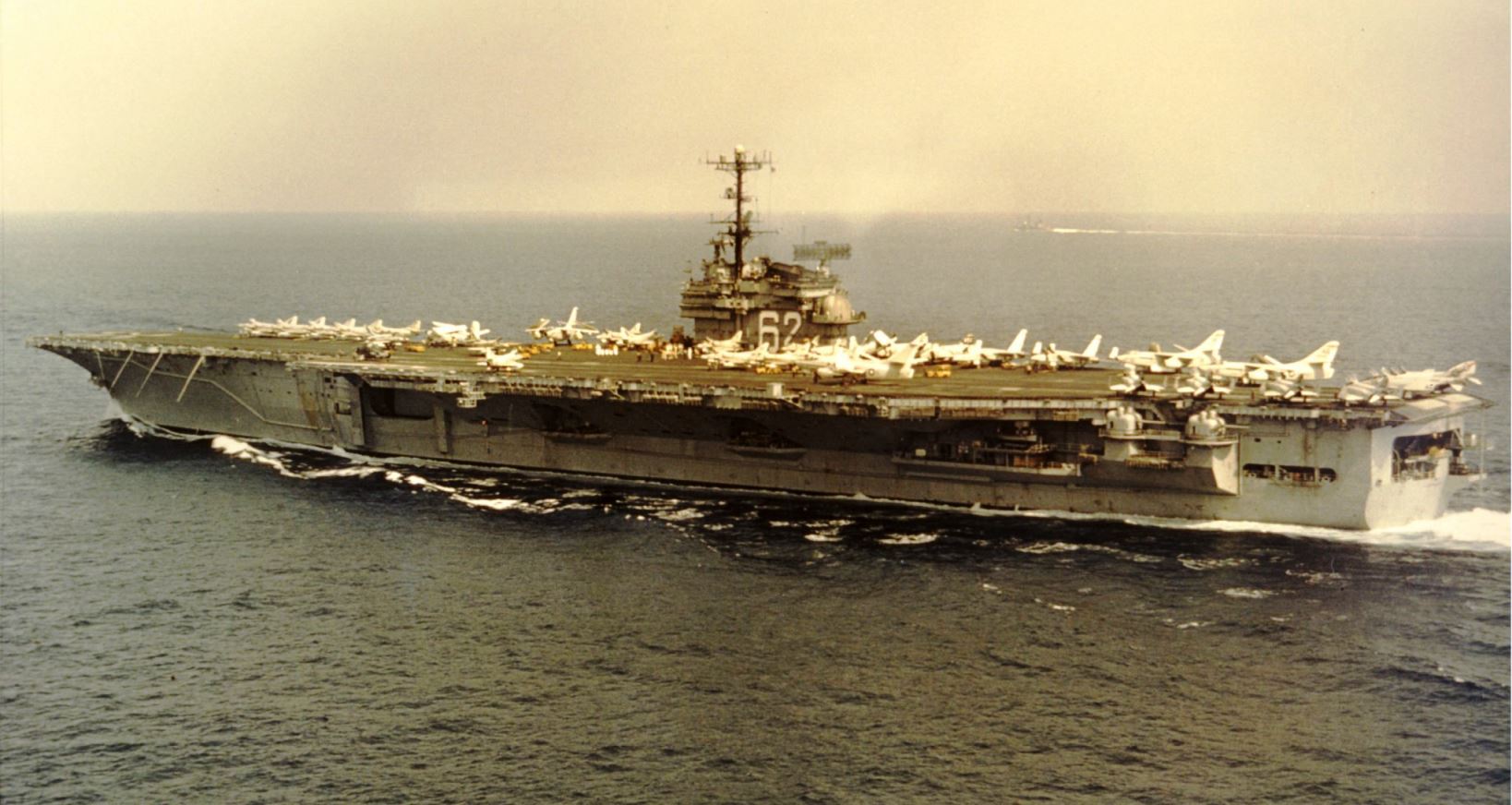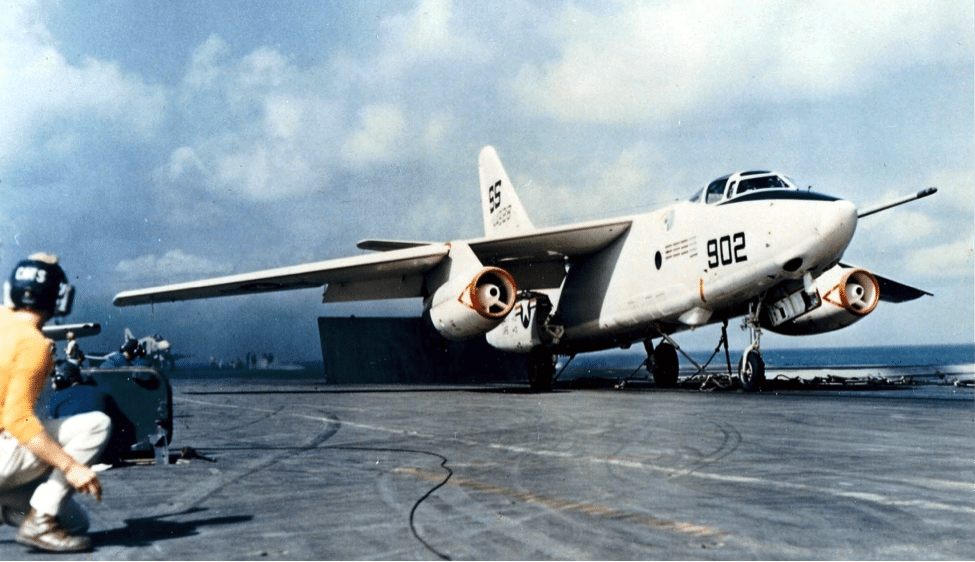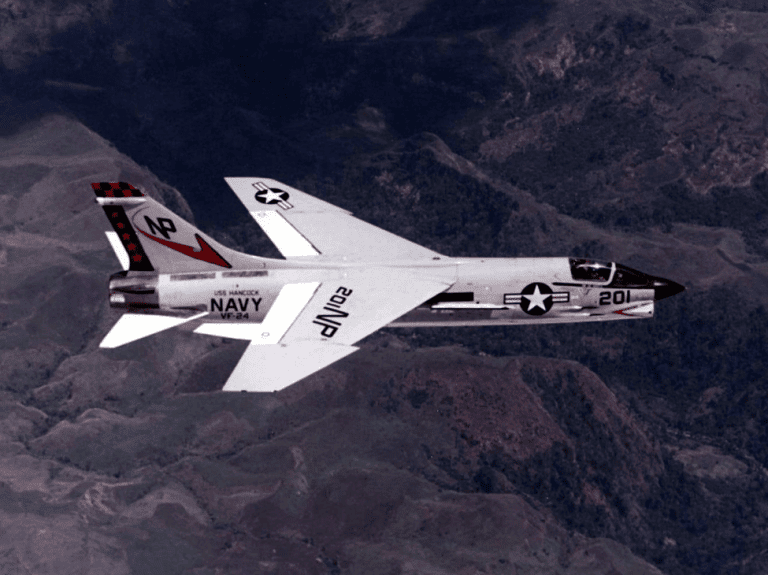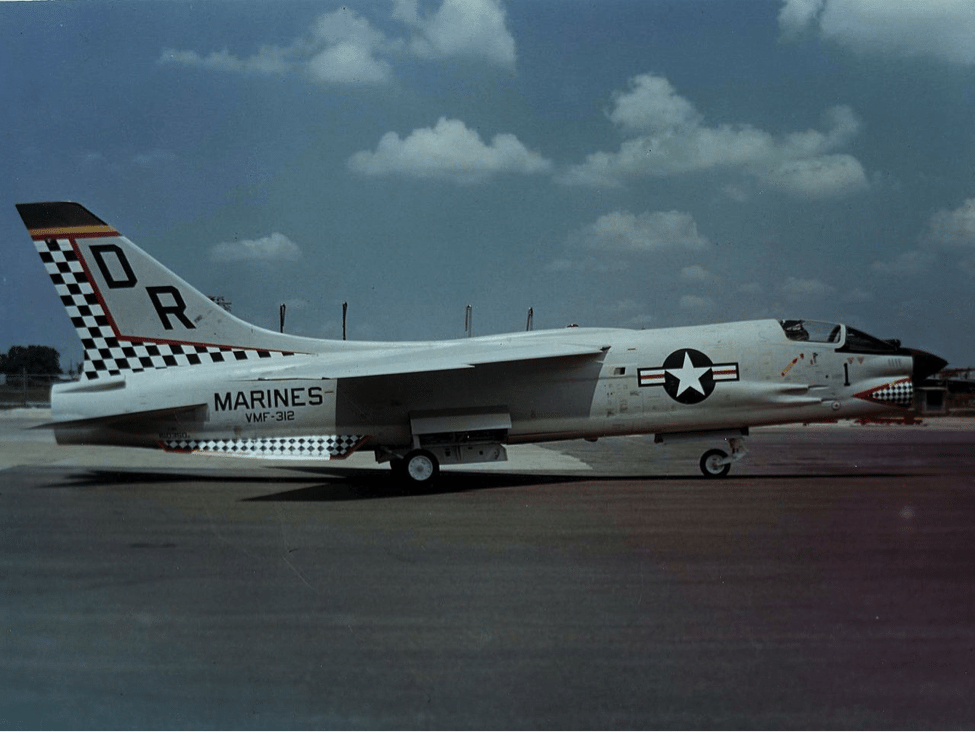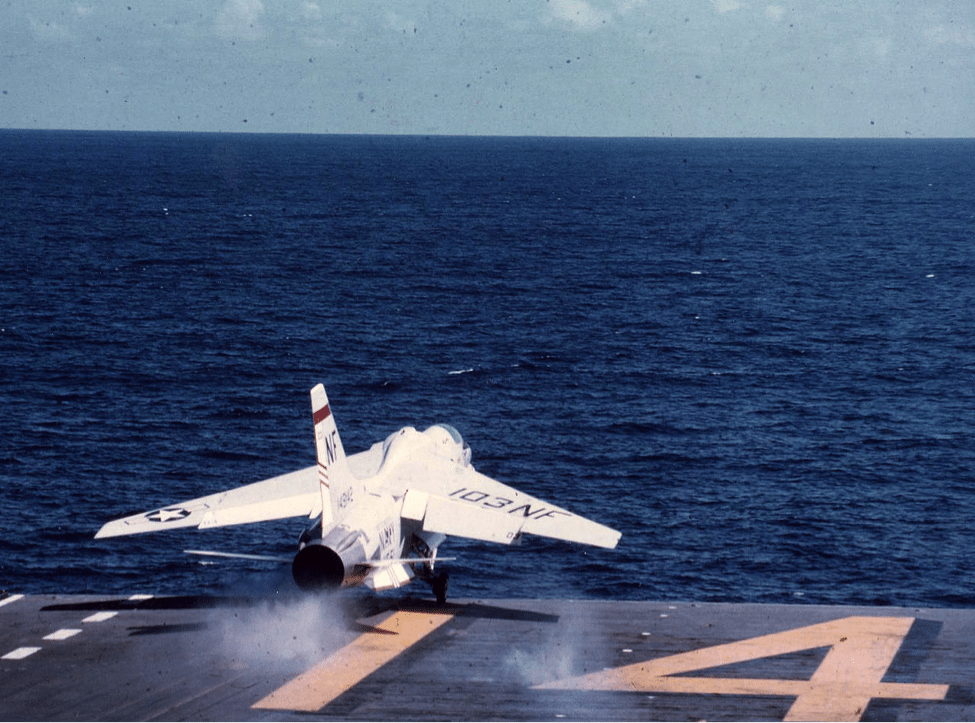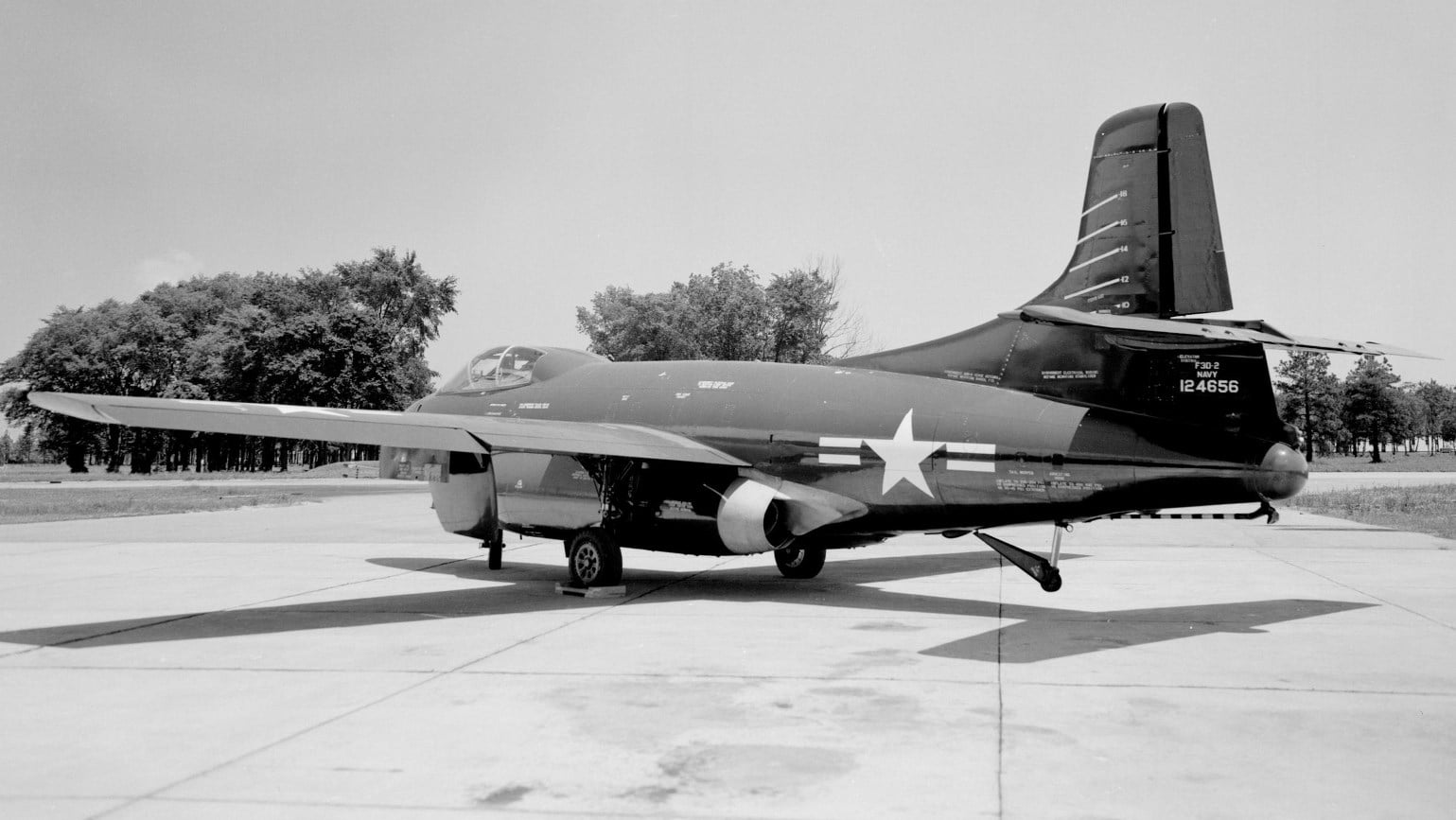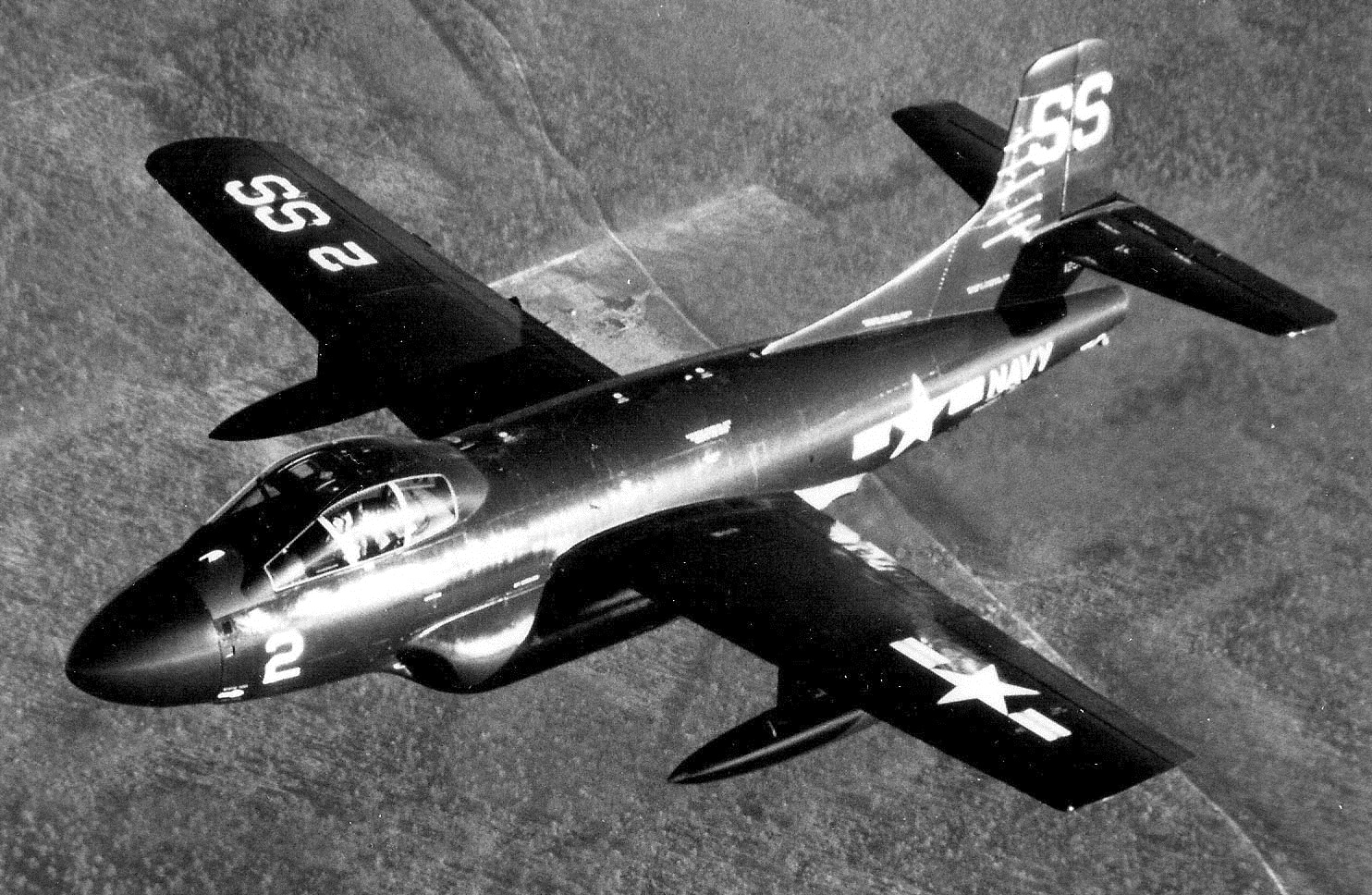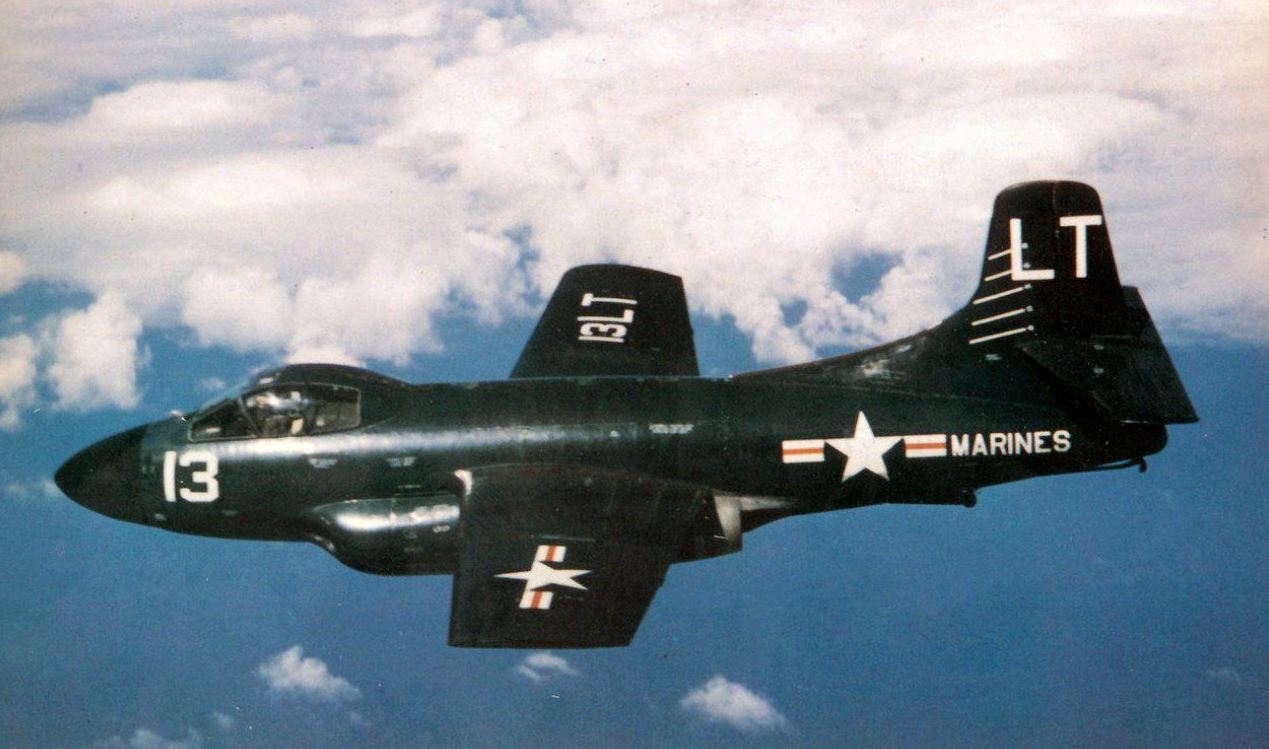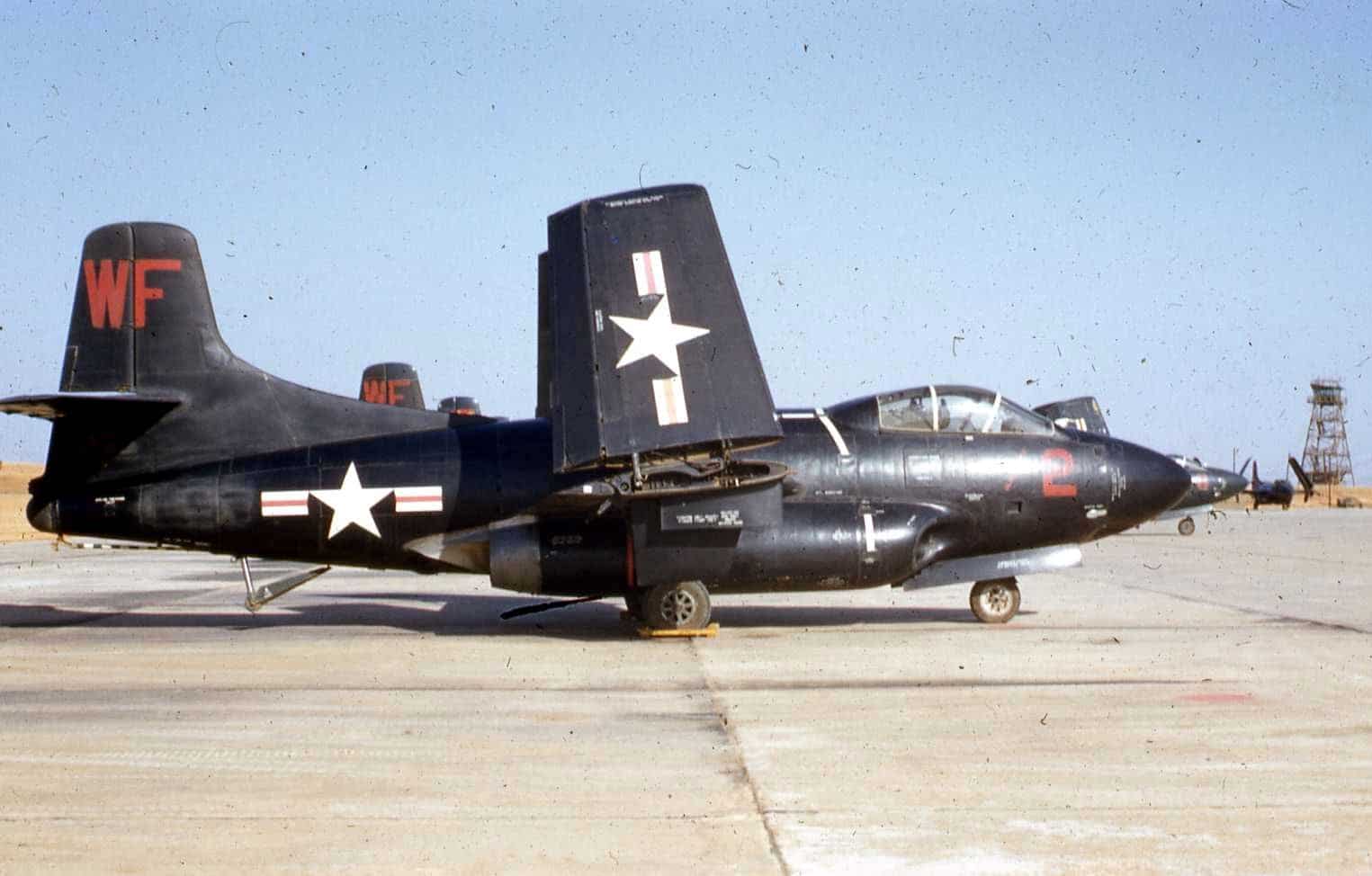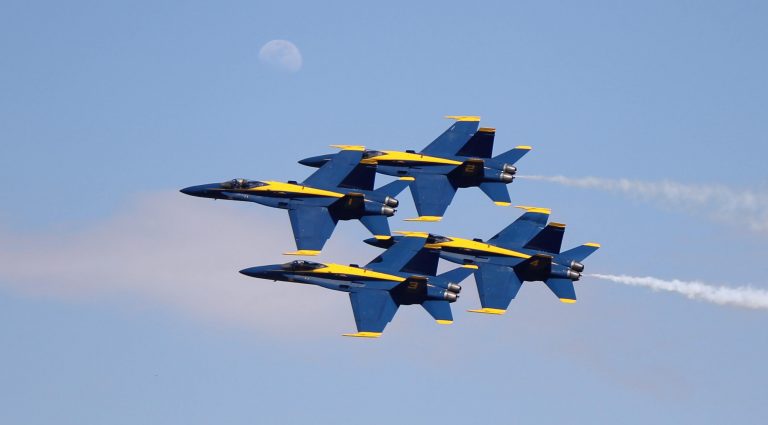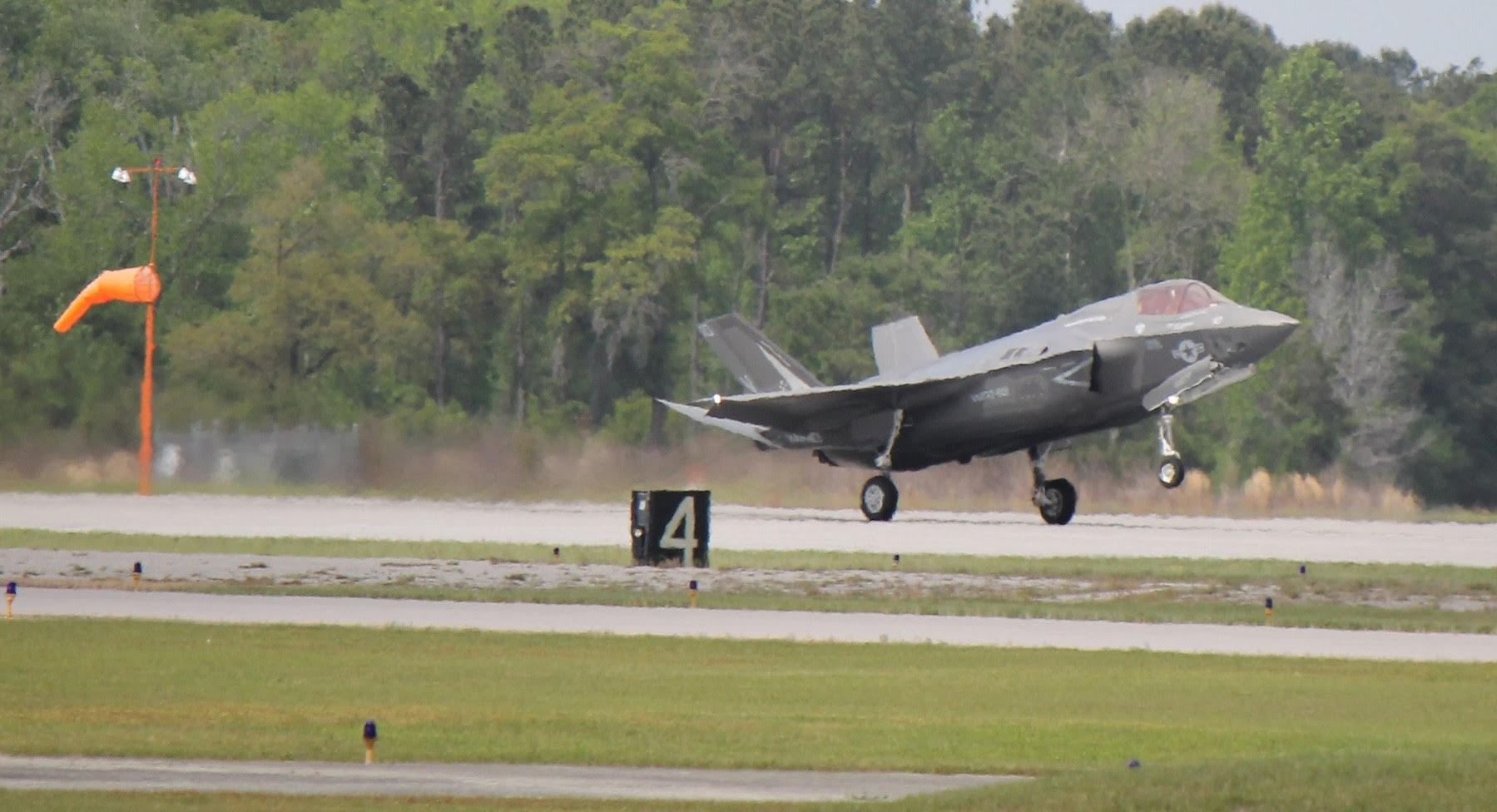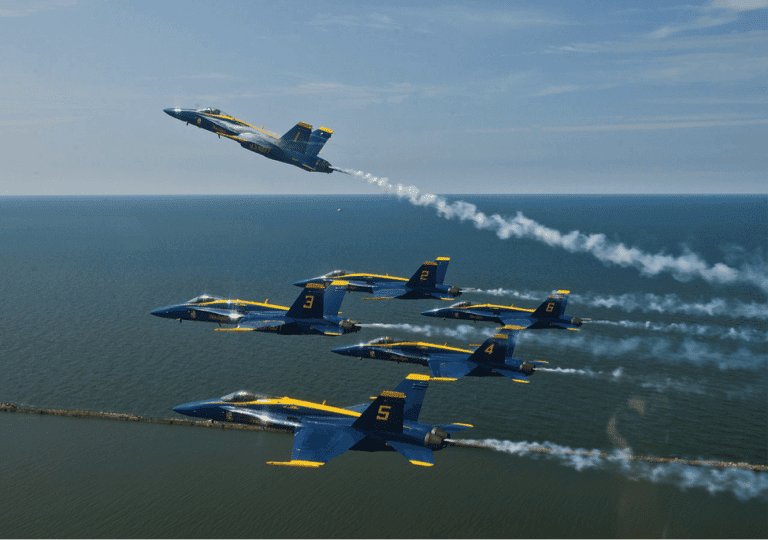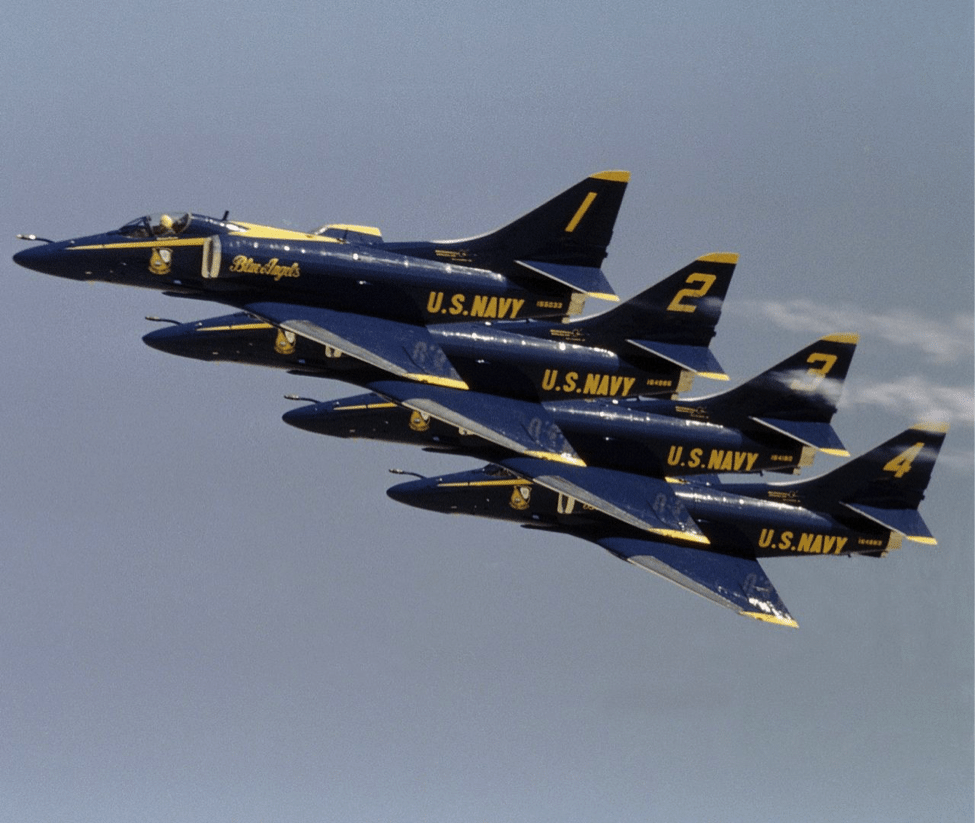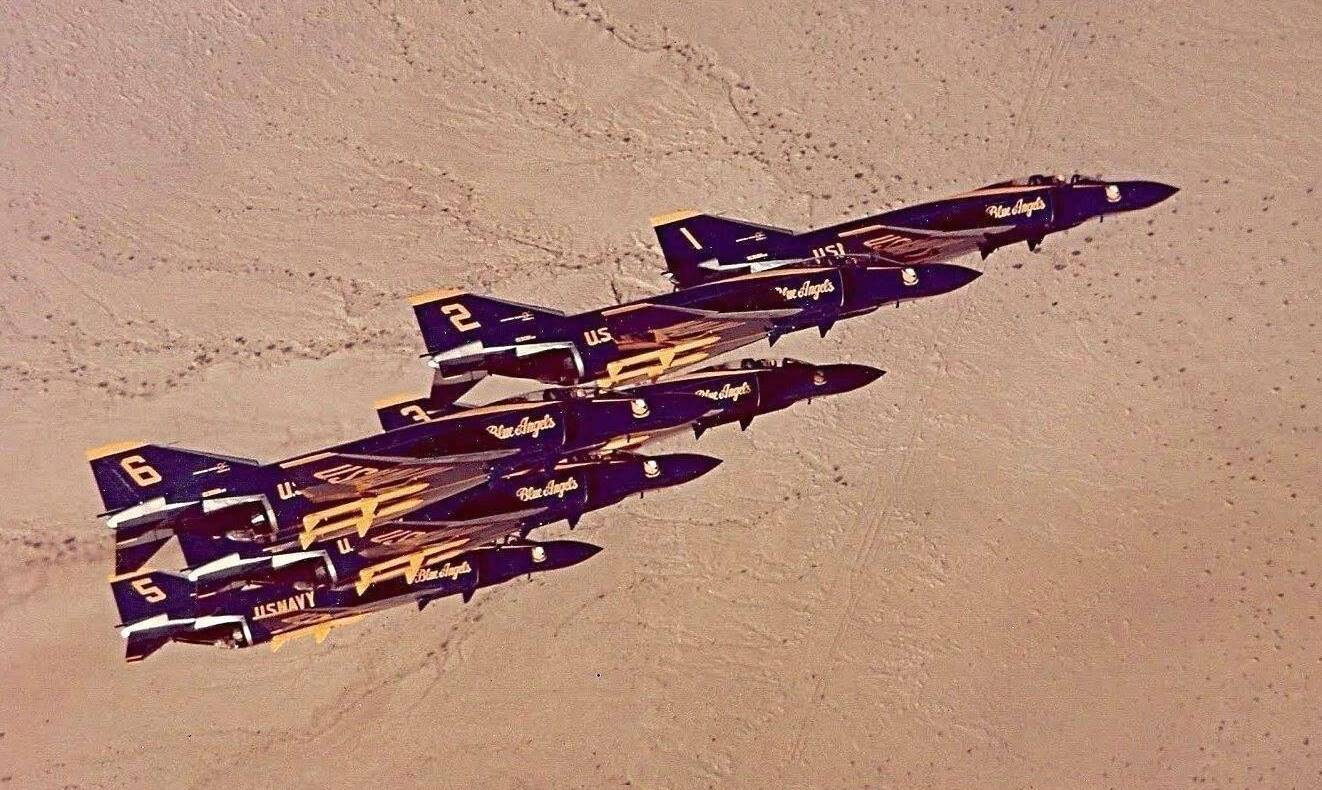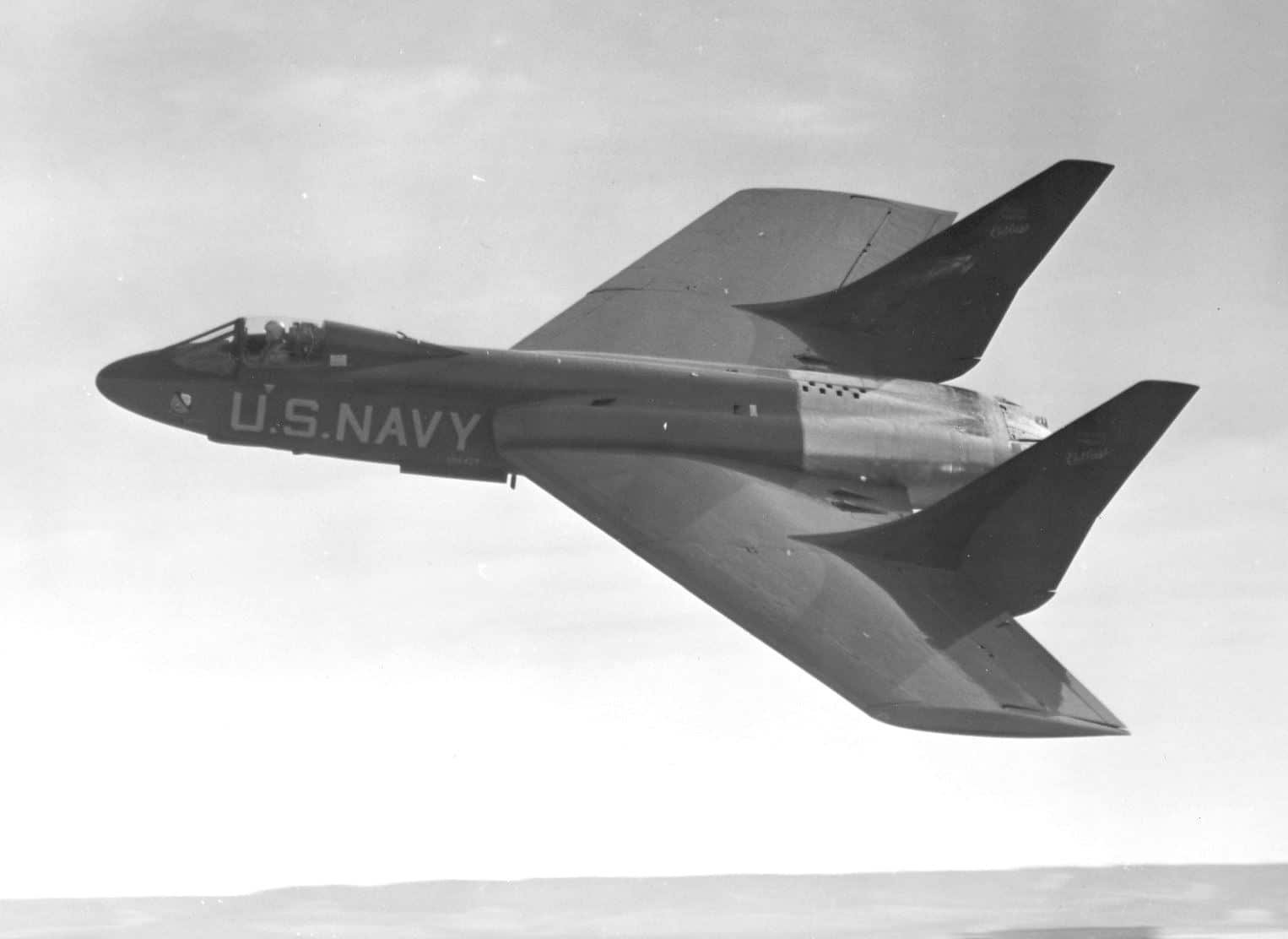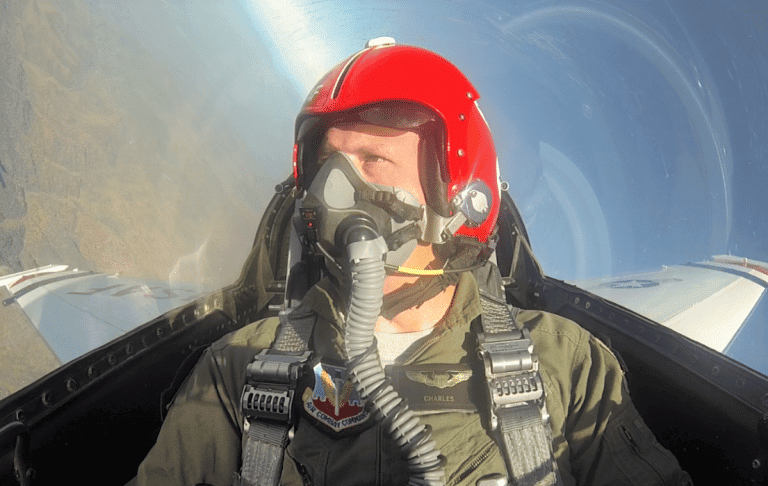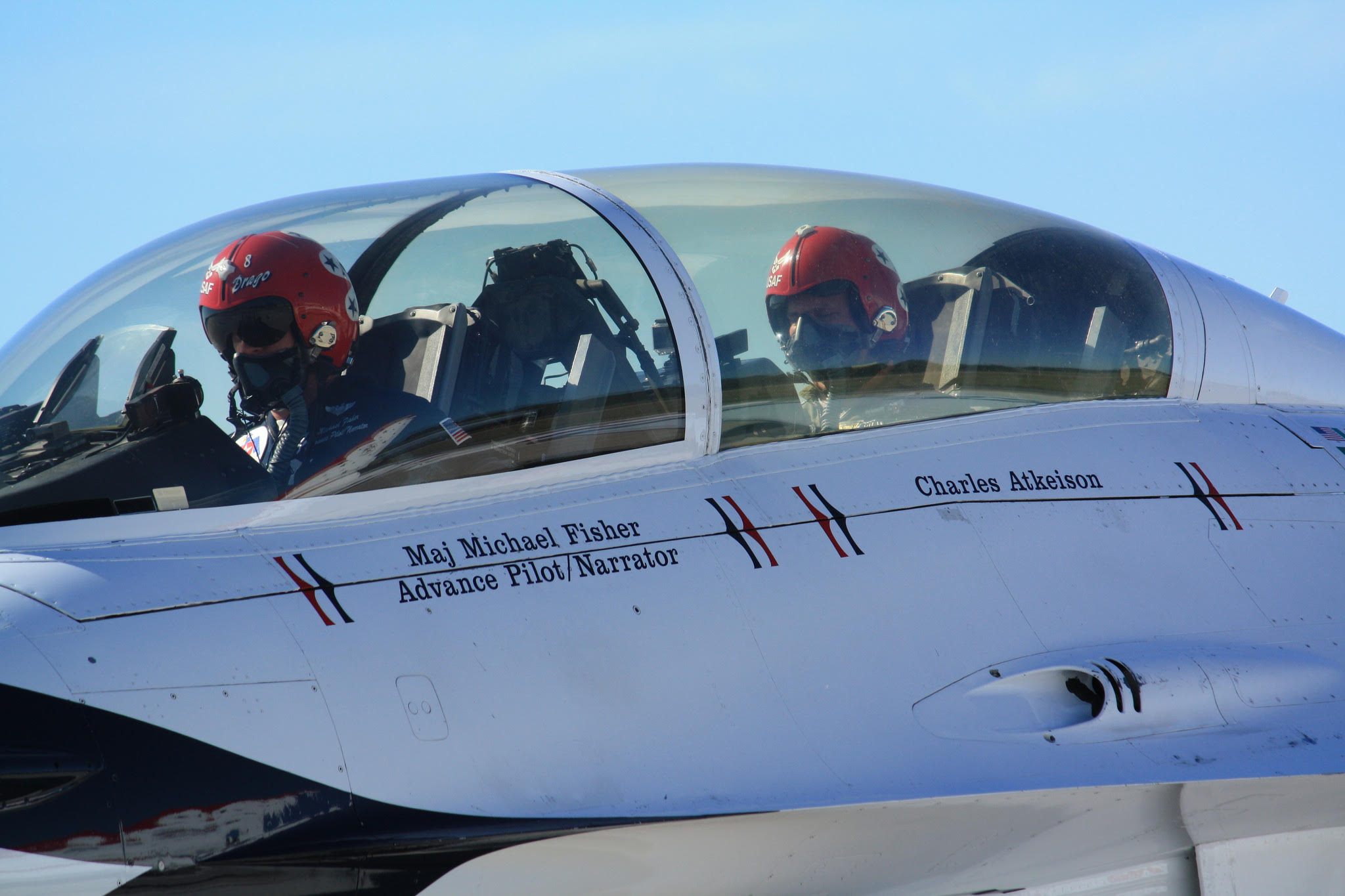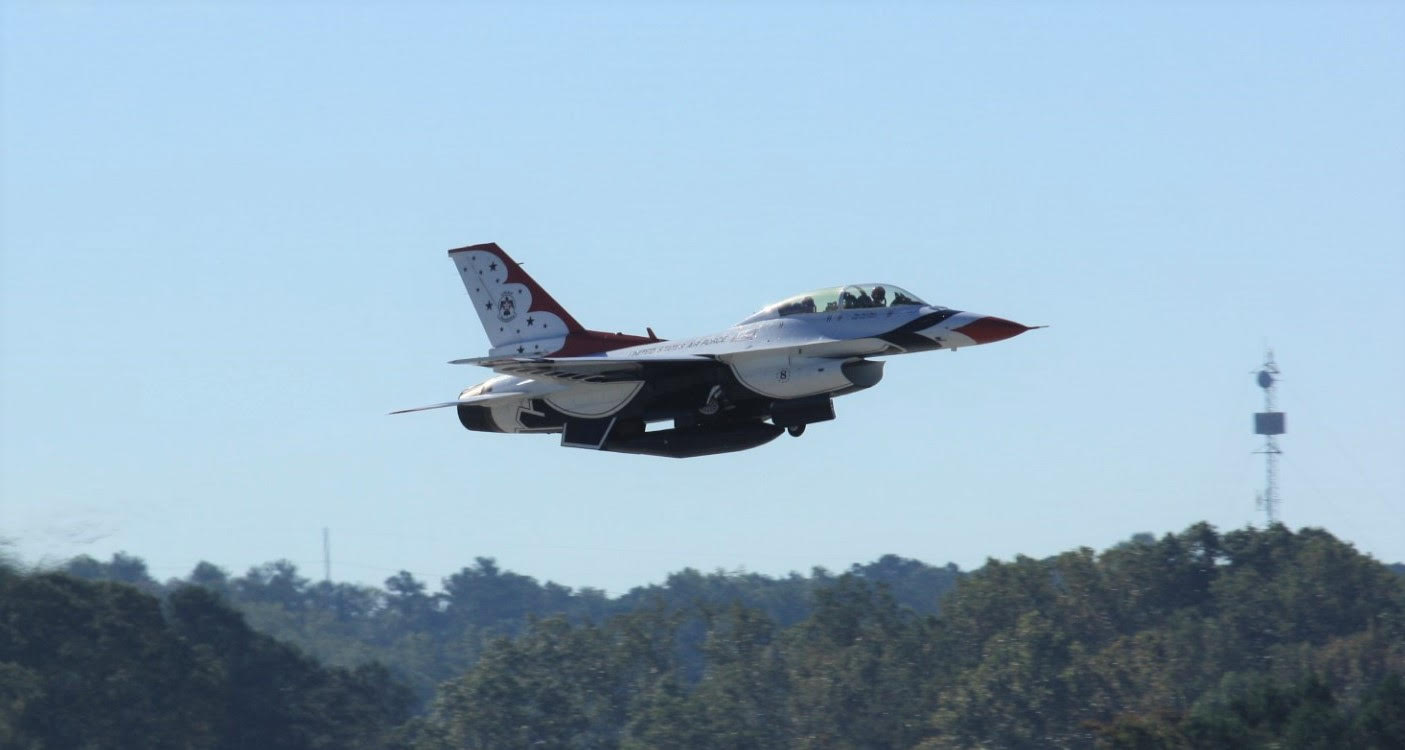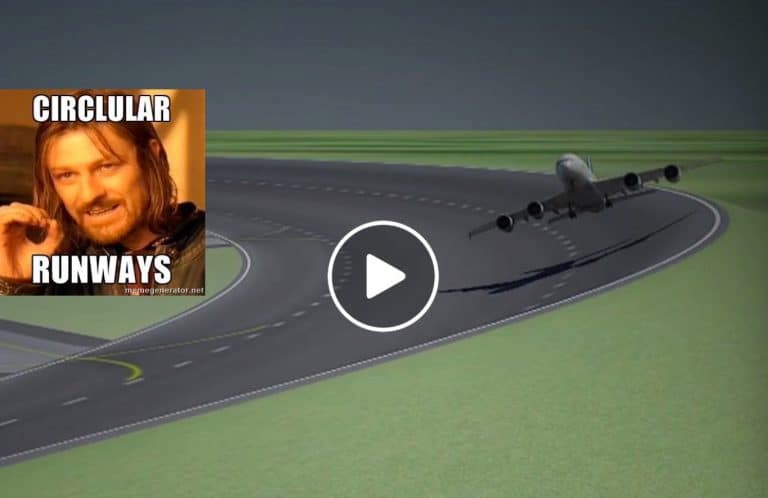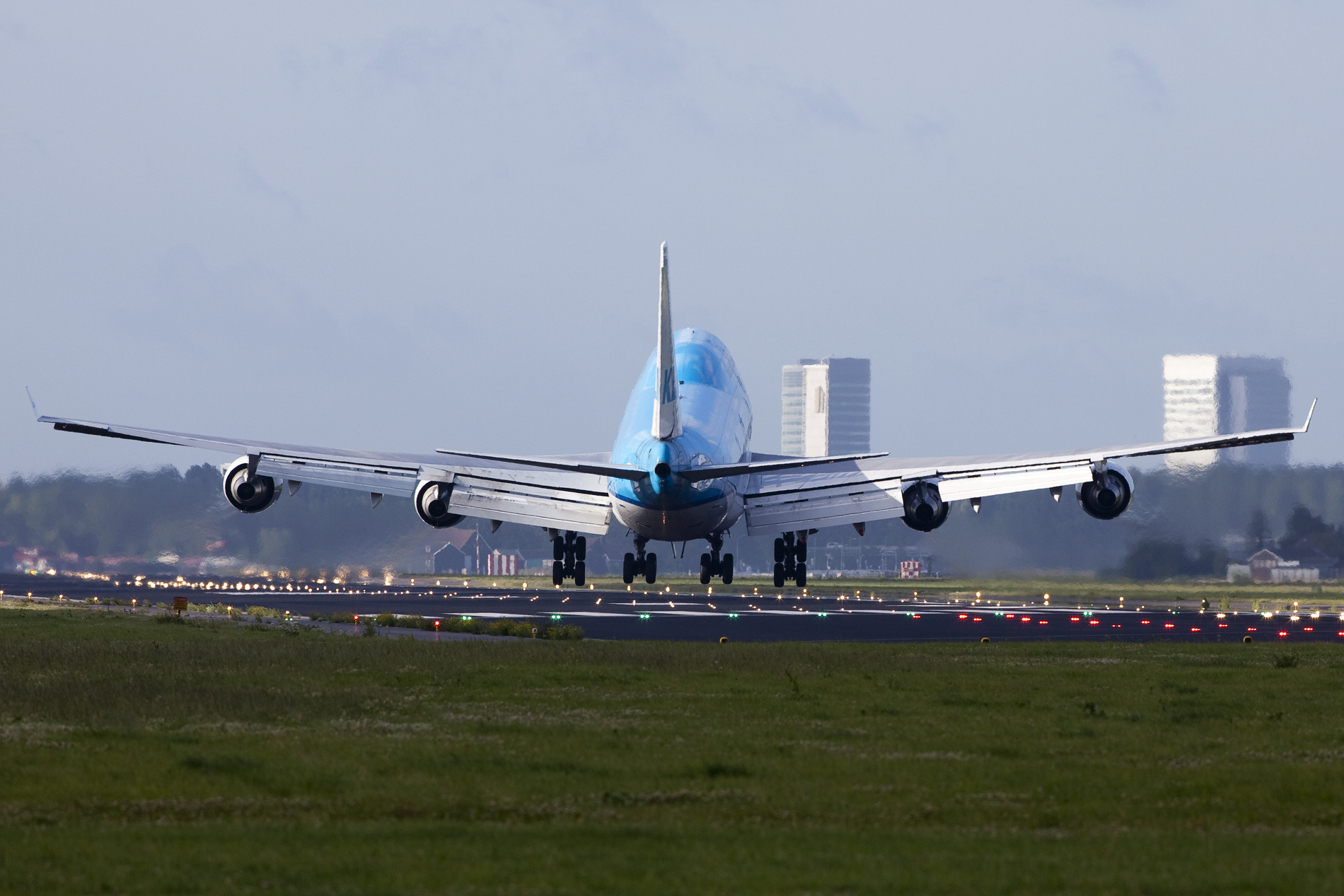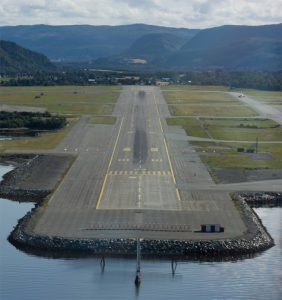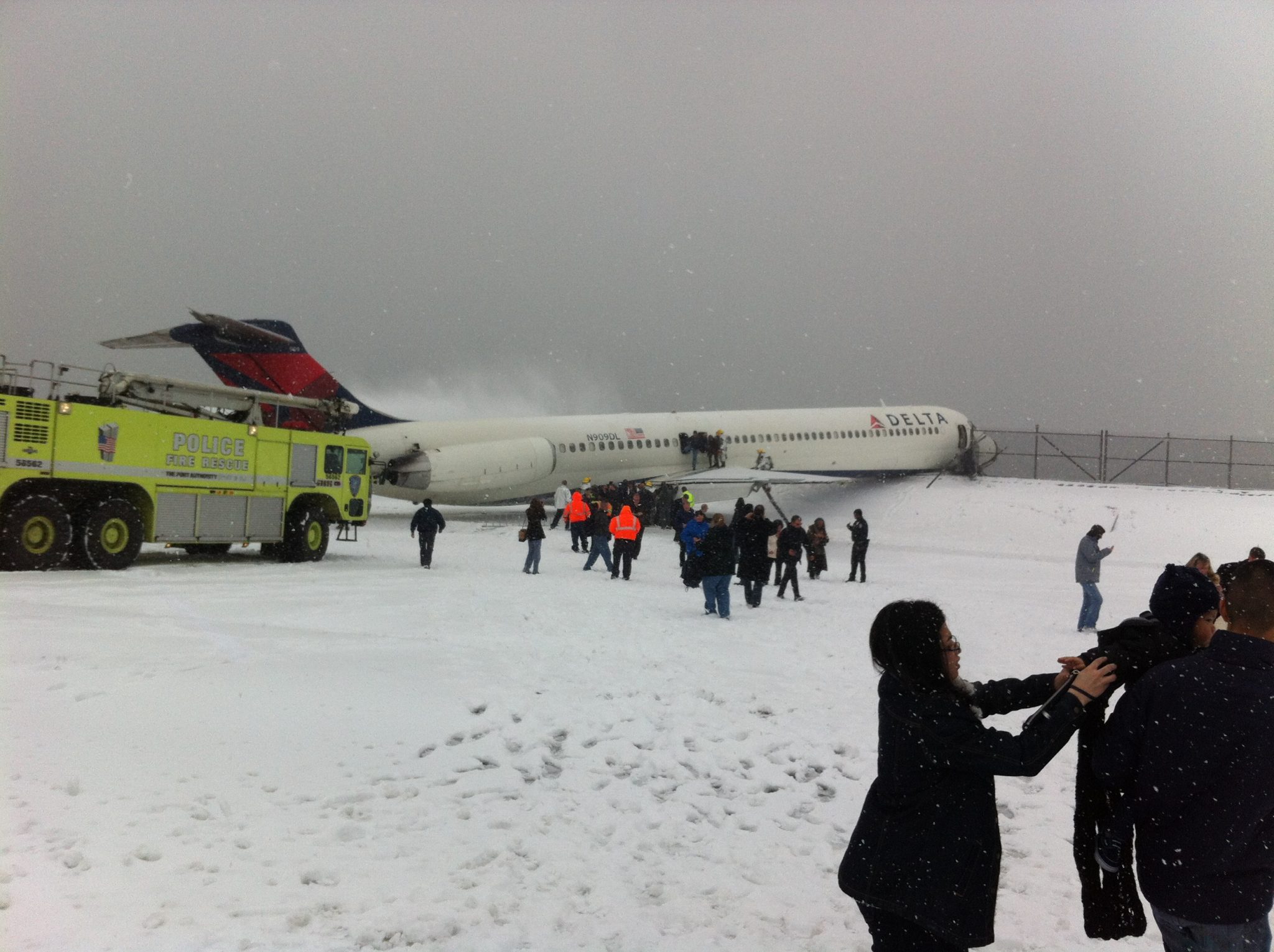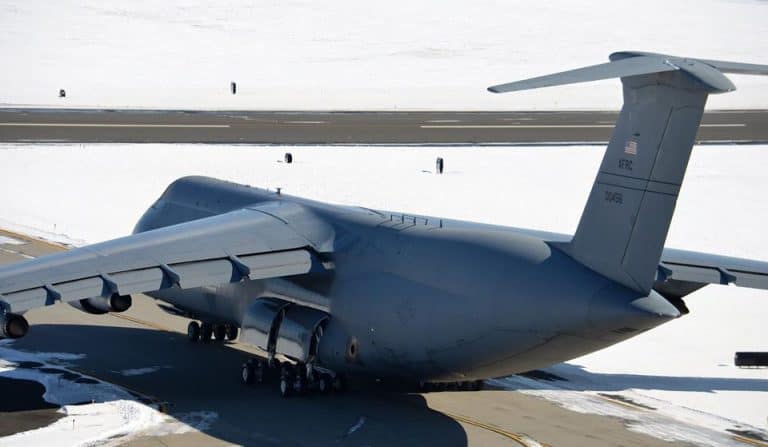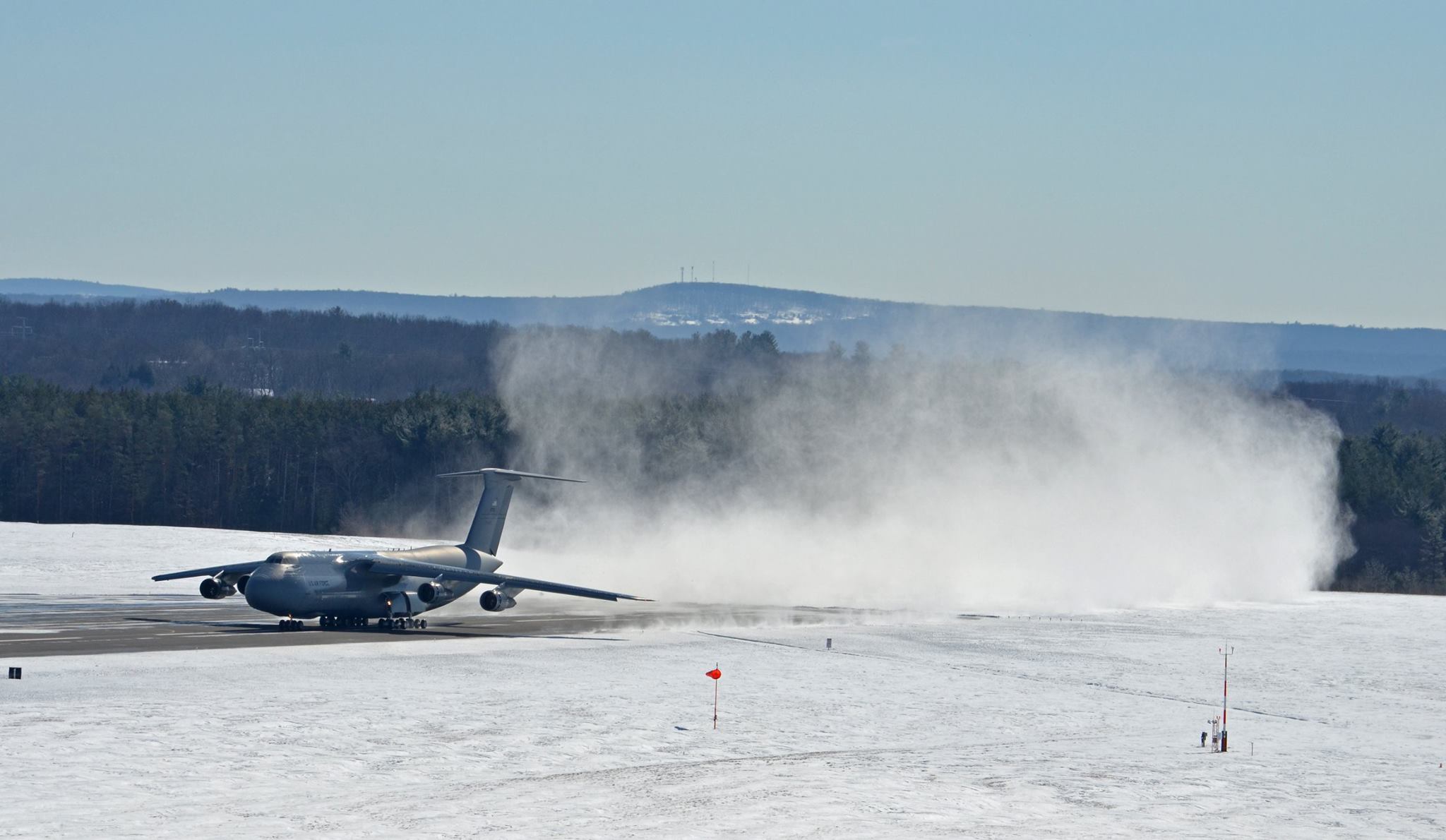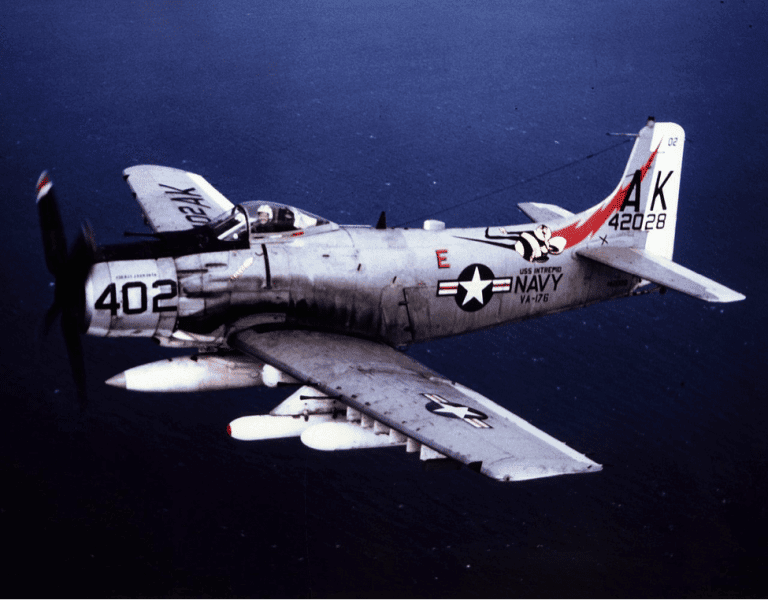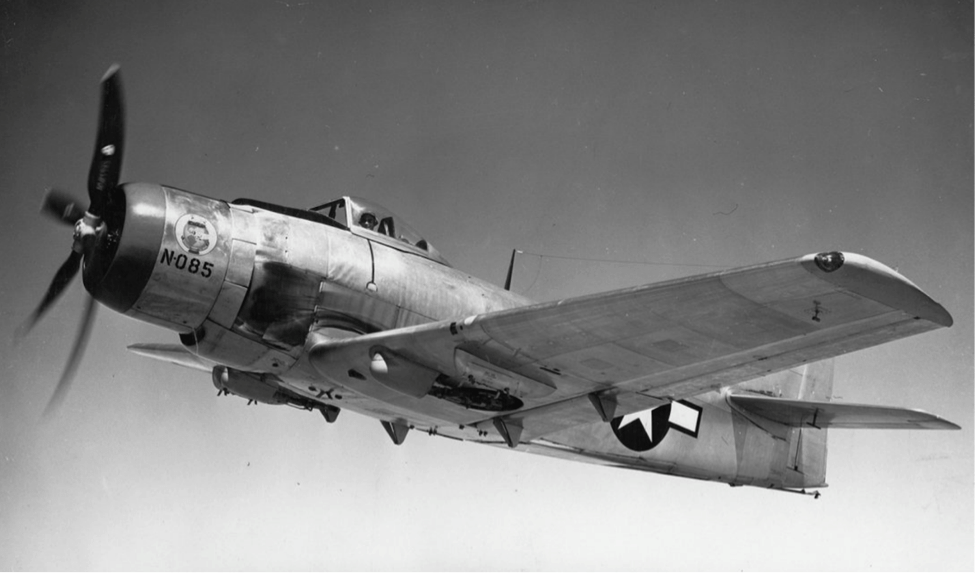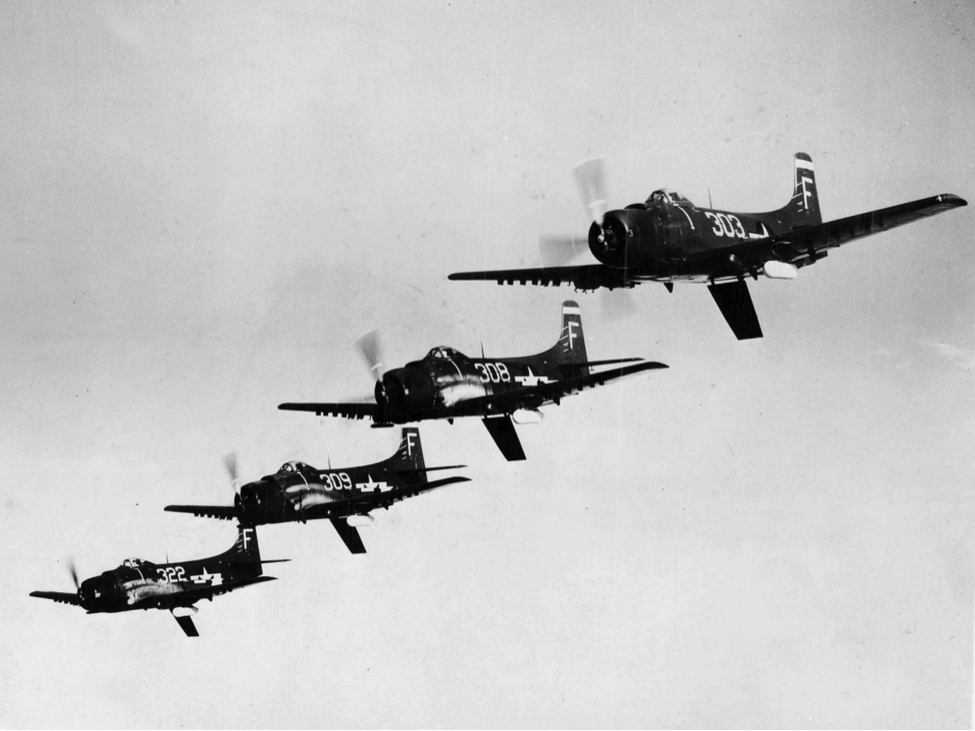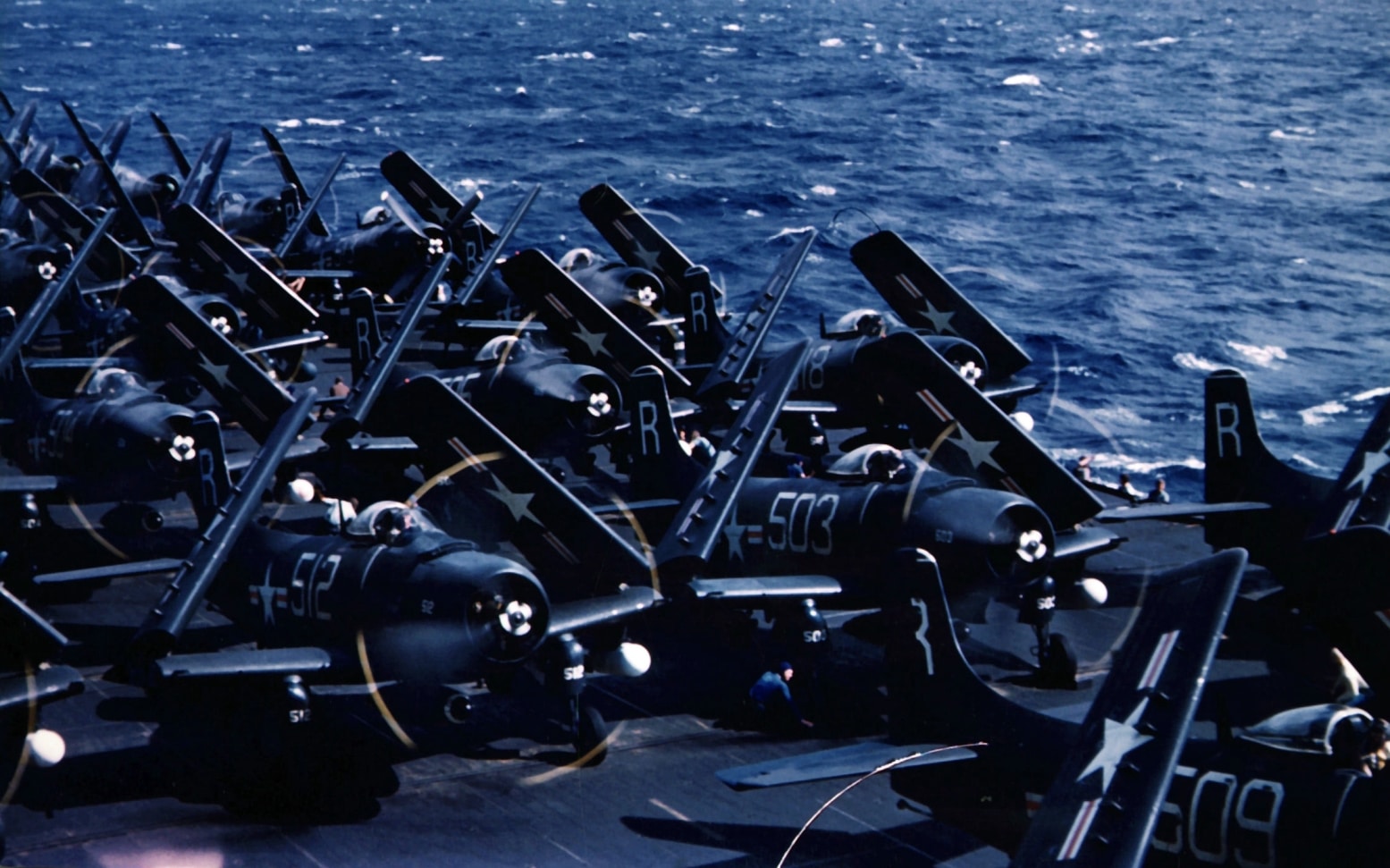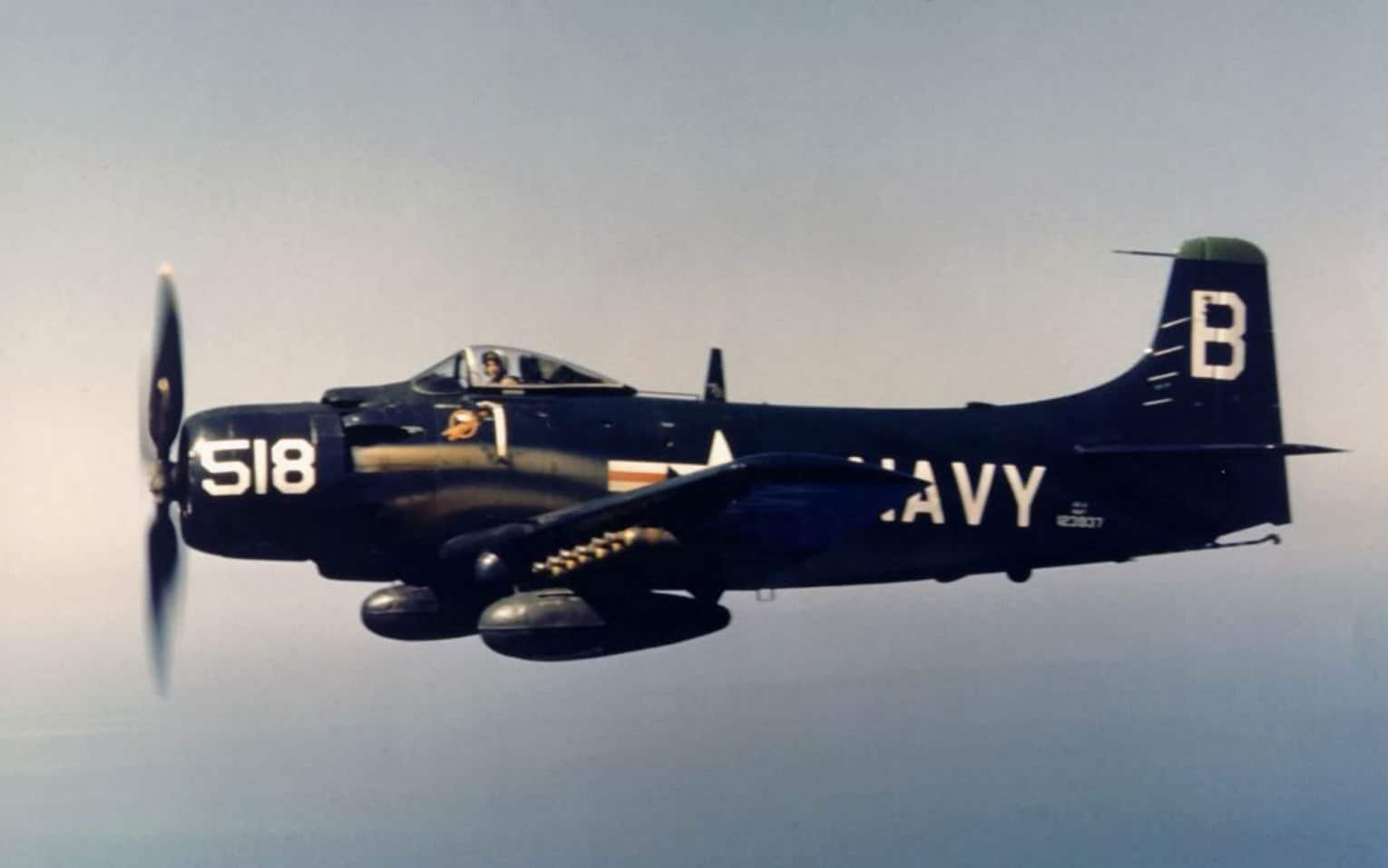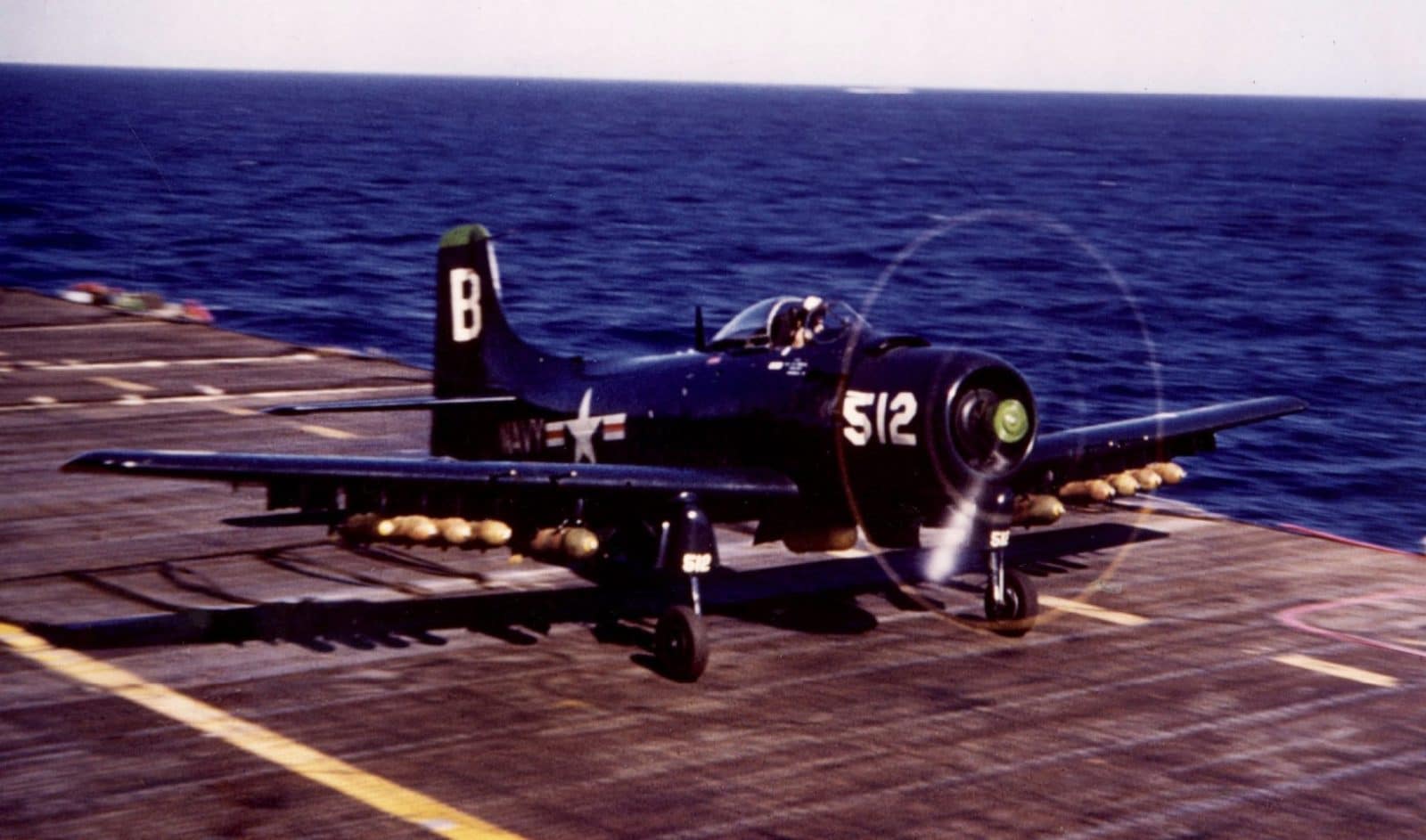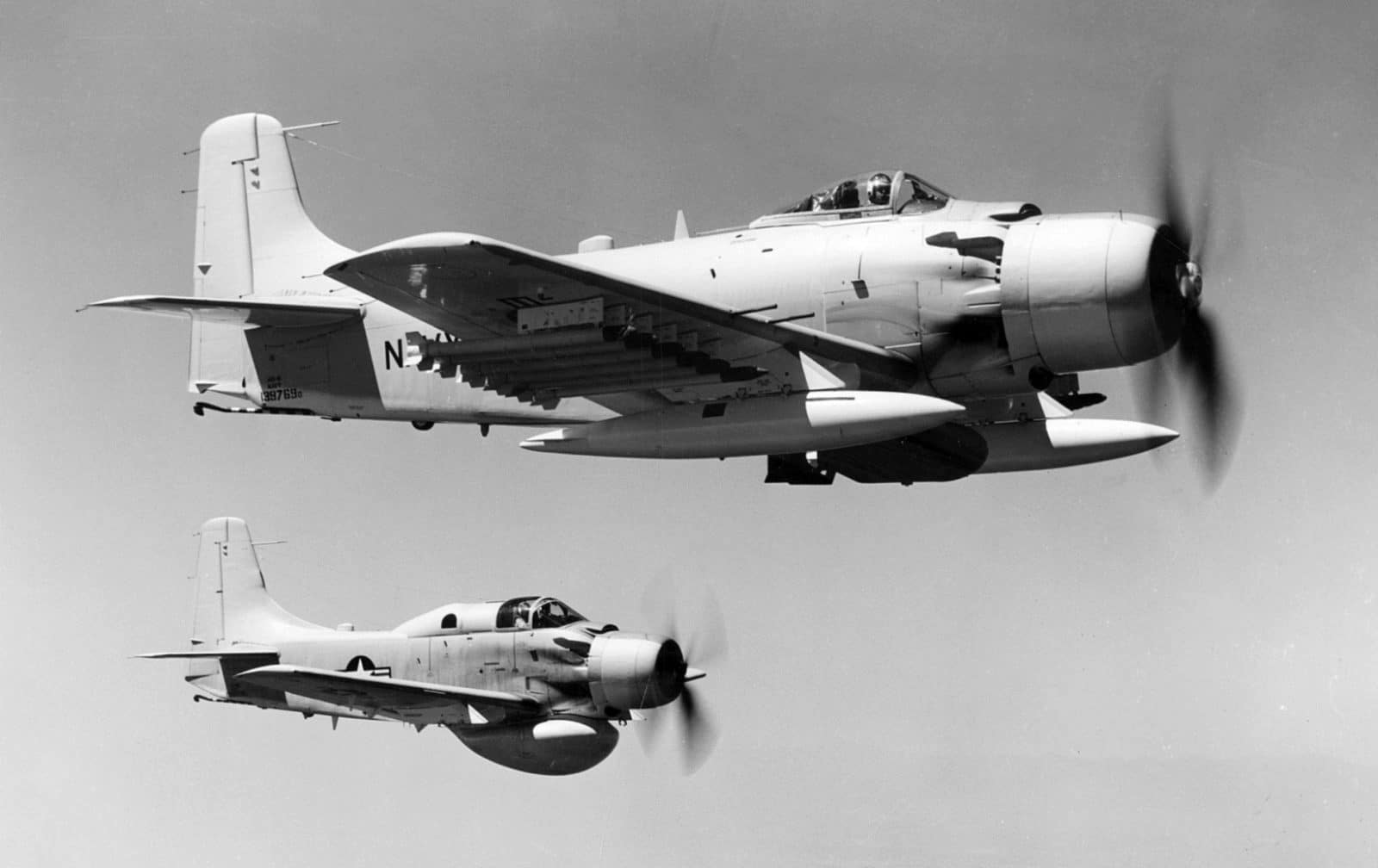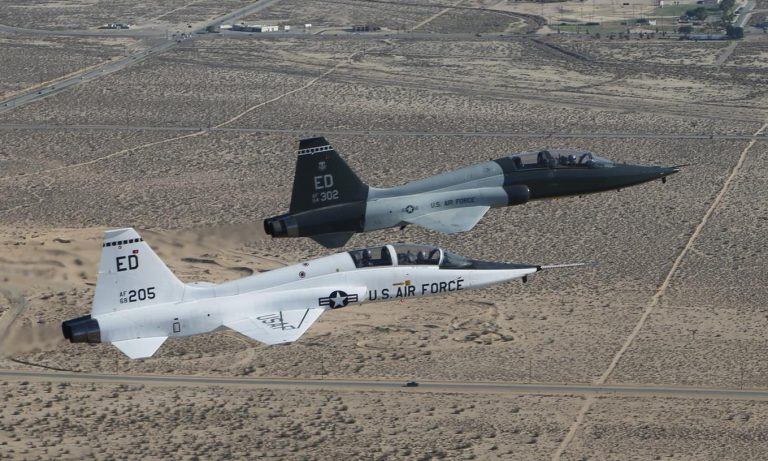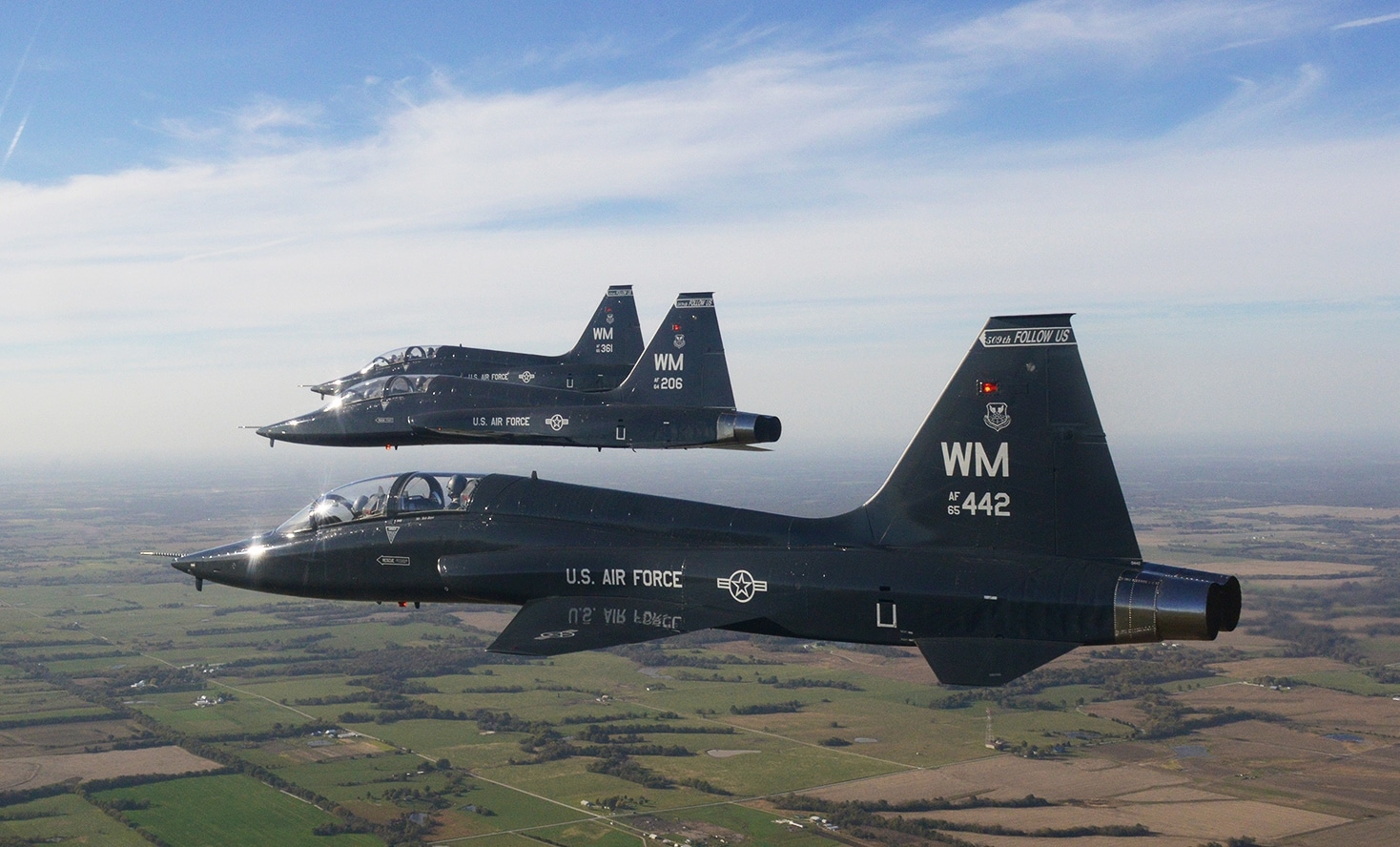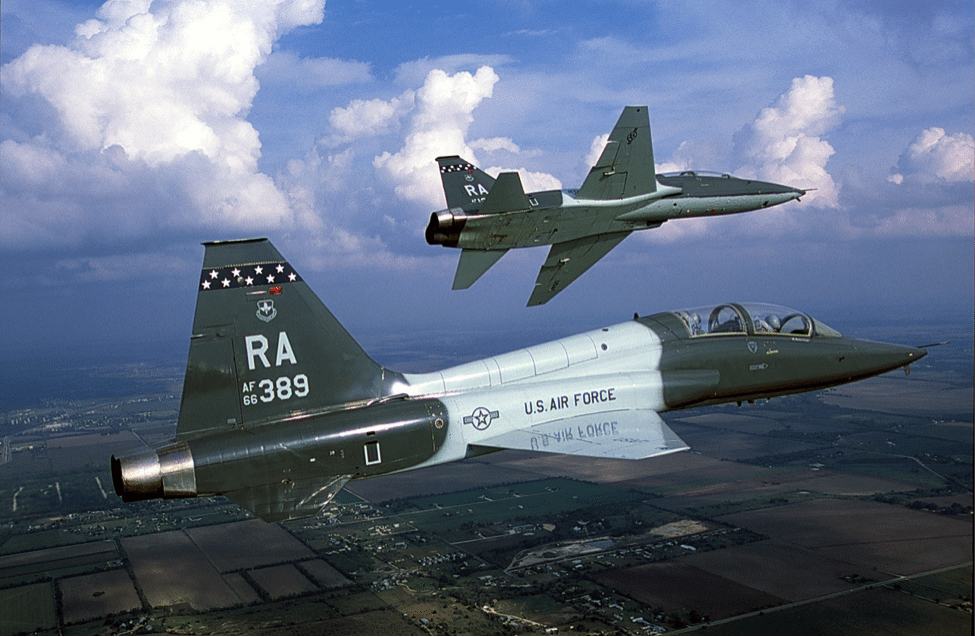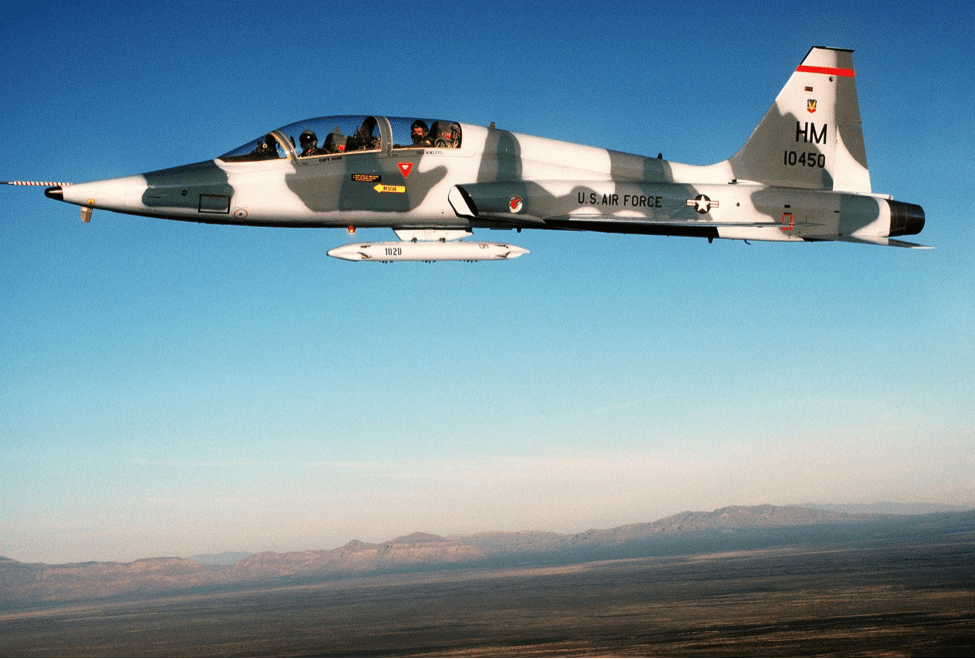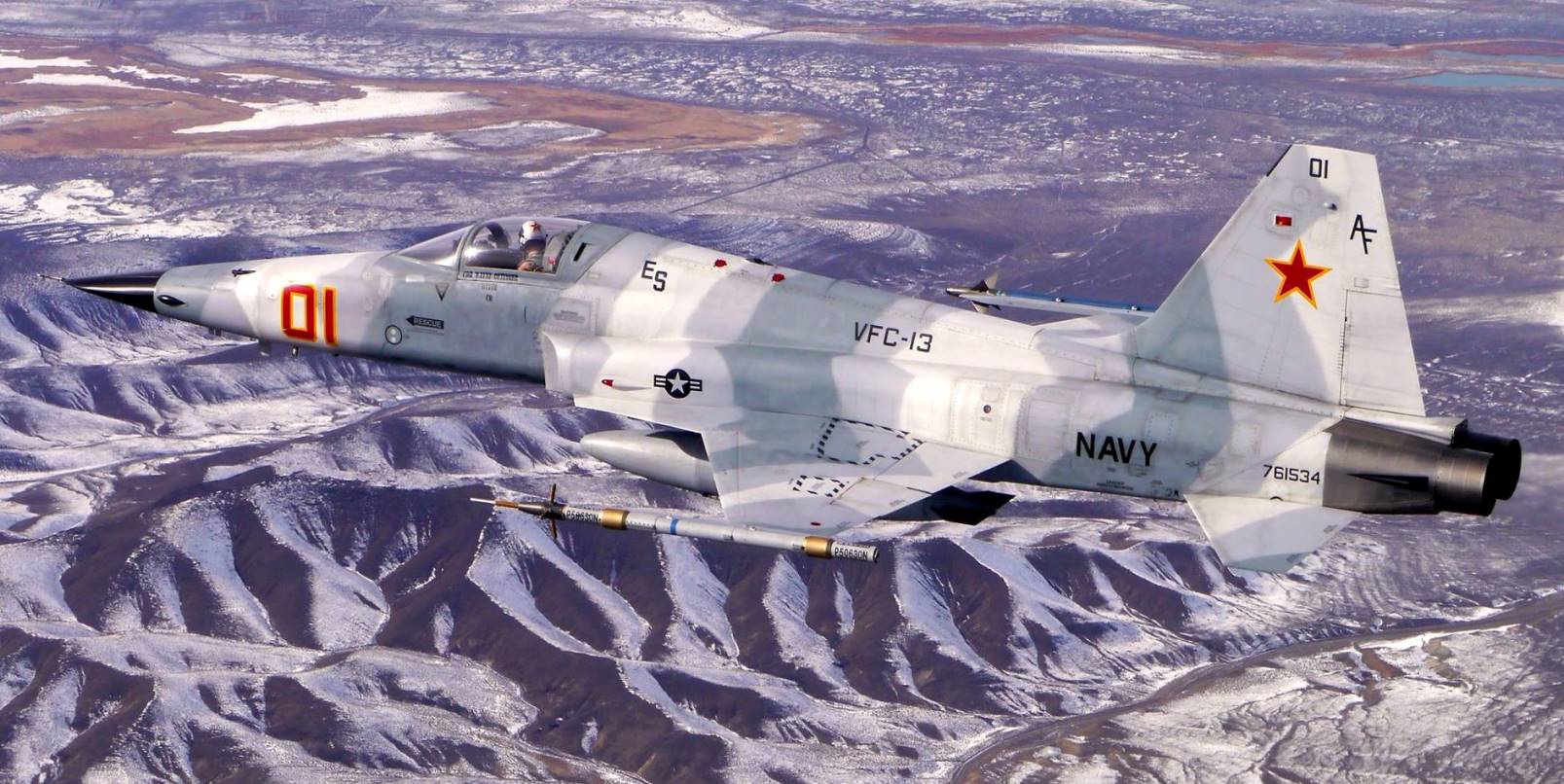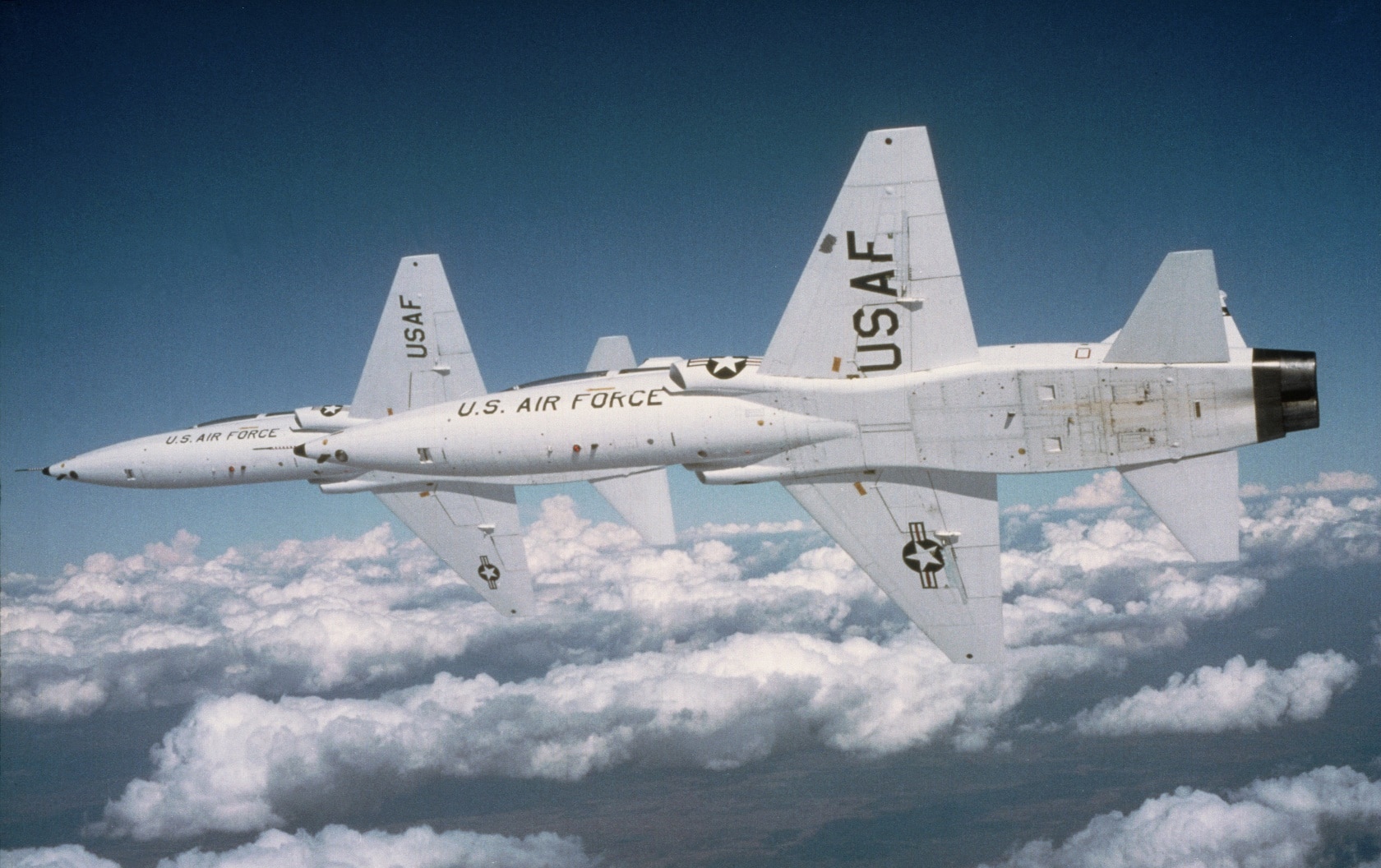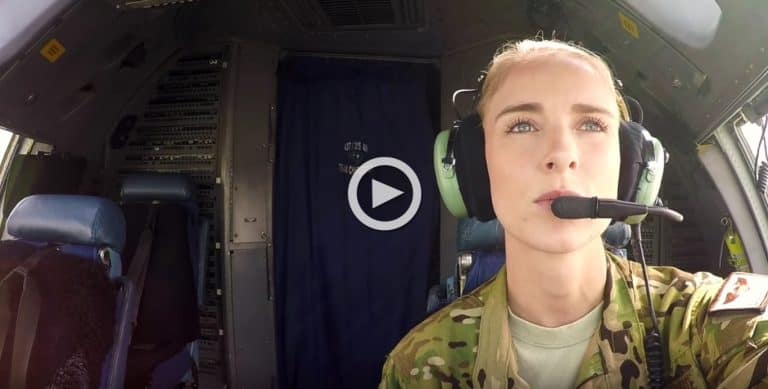Climbing aboard a sleek Air Force fighter jet and launching into the deep blue sky can make one either grin or become ill — for this aerospace journalist punching that sky in an aerobatic jet was an incredible feeling.

To soar with the U.S. Air Force Thunderbirds was a dream come true as I welcomed the chance to chase the sound barrier and pull nearly 8G’s in a Lockheed Martin-built F-16D Fighting Falcon. The Air Force Air Demonstration Squadron will celebrate their 64th year in 2017, including their 34th year performing with the front-line fighter, the F-16.
The Thunderbirds are known as America’s Ambassadors in Blue and they live up to the title inspiring young men and women across the country to reach for their goals in education and technical training by serving in the Air Force. They perform to support recruitment in the Air Force; to represent the U.S. armed forces to the nations across the globe; and give American citizens a self fulfilled confidence in their military.
In his third year with the team, Thunderbird 8 is Major Michael Fisher, a native of Vancouver, Washington. He has logged 432 combat hours in the F-16 and over 2000 hours as a pilot. During the 2014 season, he served as the Thunderbirds’ air show narrator announcing the aerobatic demos as the teams soars over the crowds.
My flight day began at dawn at Dobbins Air Reserve Base located northwest of metro Atlanta. Dobbins is home to the Airmen of the 94th Air Wing division and supports military operations such as aircraft fueling and logistics. On this cool October morning, Dobbins is where my jet stood poised for flight.
The Thunderbirds support staff assisted me as I received a final preflight medical check by the team’s flight surgeon Major Michael “Doc” Carletti, and tried on my flight uniform and partial pressure G-Suit. I’ll be counting on the G-Suit to keep the blood flow in my upper body toward my heart and brain. The team checked my flight helmet for comfort and I was ready to fly.
The Thunderbirds fly with the newer F-16C/D which support the lighter Block 52 Pratt and Whitney F-100 engine providing an additional 3,600 pounds of thrust over the previous version. The nearly fifty foot long aircraft has a wingspan of 31 feet across and a thrust of up to 29,100 pounds. The pilots call the F-16 a rocket.
Major Fisher gave me a final briefing on what to expect preflight thru landing. Touch this and do not touch this in the cockpit rules were given and I hurriedly took it all in as he spoke with comfort. This Air Force team was superb as they both educated and relaxed me as launch time neared.
Fisher and I walked out to our aircraft, Thunderbird 8, which was parked next to the six flight demonstration F-16C’s. As I approached the red, white and blue high gloss painted aircraft, I looked up at the opened glass canopy and read Major Fisher’s name identifying his aircraft. A grin then ran across my face as my eyes laid witness to a second name next to Fisher’s below where the canopy closes shut. It read “Charles Atkeison”.
After pausing to reflect on my black stenciled name, Fisher and I greeted the aircraft’s support team with a firm handshake for each, and I then began to climb the ten foot tall blue slender ladder hung from the edge of the jet’s cockpit to ingress my seat. The seat supports a multi-point harness and can be used as an ejection seat if an in flight emergency arises.
Major Fisher ascended the ladder and pointed out my cockpit displays, including my oxygen settings, the safe and arm device for my ejection seat and the fact that this flight included drinkable water in a bottle.
I inserted ear plugs followed by donning my flight helmet which sports the letters “USAF” in white. My oxygen mask was next and I placed it over my nose and mouth and locked it’s strap to my helmet. A long grey hose extended down to the life-support controls on my starboard side.
Fisher’s Air Force pilot call sign is “Drago”, and prior to joining the Thunderbirds he served as an F-16 flight instructor. My flight was in good hands.
Five minutes to go, and I was comfortable in the cockpit breathing at 95% oxygen flow through my mask as we sat poised for flight. It was white knuckle time as I awaited a go from flight control. Air control between Dobbins ARB and Atlanta’s Hartsfield-Jackson Airport gave Drago the “go” for departure and approval for steep ascent. Seconds later, our Fighting Falcon began moving toward take-off velocity.
At 10:27 a.m. EDT, our F-16D was wheels up from Runway 29 and we flew low and level for ten seconds as we neared 400 knots (460 m.p.h.), Drago exclaimed over his headset mic, “Ready to go?”. And I replied, “Rock and roll, Thunderbirds are go!”
Lift-off! Major Fisher and I were pointed nose up, and in a rush with an acceleration of five times earth’s gravity, we were launching into that deep blue sky. I radioed back, “Alllright!”. Straight up we climbed for twelve seconds before performing a 360-degree roll to place us wings level nearly at 7,050 feet above. Our flight was on a northeasterly heading aimed toward our “flight box” over Snowbird MOA, an imaginary region where we would perform intense aerobatics devoid of other aircraft.
As I soared on the wings of a Falcon, I looked around at the earth below me. A cockpit alarm sounded and I turned to focus on the displays as we thundered across northwestern Georgia.
We began our aerobatics with the Clover Loop and right into a 5G-pull. Drago stated that the flight maneuvers we would be performing are the same in which the T-Bird solos fly during an air show. The only difference is the solos will be 150 feet above the airfield while our flight soared between 15,000 to 17,600 feet high.
“Pretty insane, isn’t it… number 5 is doing that 150 to 200 feet above the ground,” Major Fisher exclaimed following an inverted flat pass. “Pretty amazing. Lots of precision, lots of concentration.”
During a Thunderbirds air show, it is the job of the two solos to give the crowds a true demonstration of the handling characteristics of the F-16. Lead Solo is #5 Major Blaine Jones and he is accompanied by #6 Major Jason Curtis, and they will excite an air show crowd every time as they speed low over the runway and perform a split maneuver which will make you wonder how do they do that?

Lead by Thunderbird 1 “Boss” Lt. Col. Greg Mosely, the team’s diamond formation includes Major Joshua Boudreaux, Major Caroline Jensen and Major Curtis Dougherty. The diamond team trades performances with the solos during their forty minute show.
As Major Fisher and I began a nearly 7G maneuver high over the Smokey Mountains, I could again feel my G-suit inflate several bladders with air to help push the blood back up into my upper torso. And, with every turn and vertical motion we flew, I never felt uneasy and my stomach never twitched.
As we performed one of several inverted maneuvers, Fisher pointed out the beauty of the autumn leaves as he held us upside down 17,500 feet above eastern Tennessee for twenty seconds. During that brief time, I reflected on the landscape and cloud cover from my personal cupola high above.
The negative 1G of wings level inverted flight grew to be my favorite maneuver while we were aloft. The knife edge maneuver gave us the sensation of weightlessness as Drago rolled the F-16 on it’s left side as we flew at a high rate of speed. We next touched the speed of sound as our majestic aircraft darted up to 575 m.p.h.

The F-16 remains a front line fighter around the globe with Airmen performing bombing runs during a time in need. Drago wanted to show me the handling of the F-16 and so we maneuvered into a simulated bombing run.
“This is something we would do in a close air support scenario over a low air or surface threat environment. We can orbit around a target,” Drago began. “Once we have our eyes on the target, and we are ready, we would begin to roll in on the target and we get clearance to deploy a weapon.” We then executed a 45-degree pass as we simulated the maneuver, “weapons away,” Drago announced.
We concluded the late morning flight with a main gear touchdown upon the same runway at Dobbins exactly 61 minutes after we last touched the earth. Drago then slowly lowered the nose gear and we rolled out several thousand feet as we expended the aircraft’s energy. A perfect ending to an incredible flight.
I learned more about what the hundreds of thousands of men and women of our United States military, and especially the Air Force, do each day. They live and work far away from home to perform a job they are good at as they defend and preserve our freedoms.
The Thunderbirds’ crews from Nellis AFB near Las Vegas and the 94th Air Wing Division near Atlanta are great examples of how our military’s Air Force is a well oiled machine demonstrating professionalism, both on the front lines across the globe and in our own communities with emergency assistance.
(Charles Atkeison reports on aerospace and technology. Follow his live updates on social media via @Military_Flight.)
